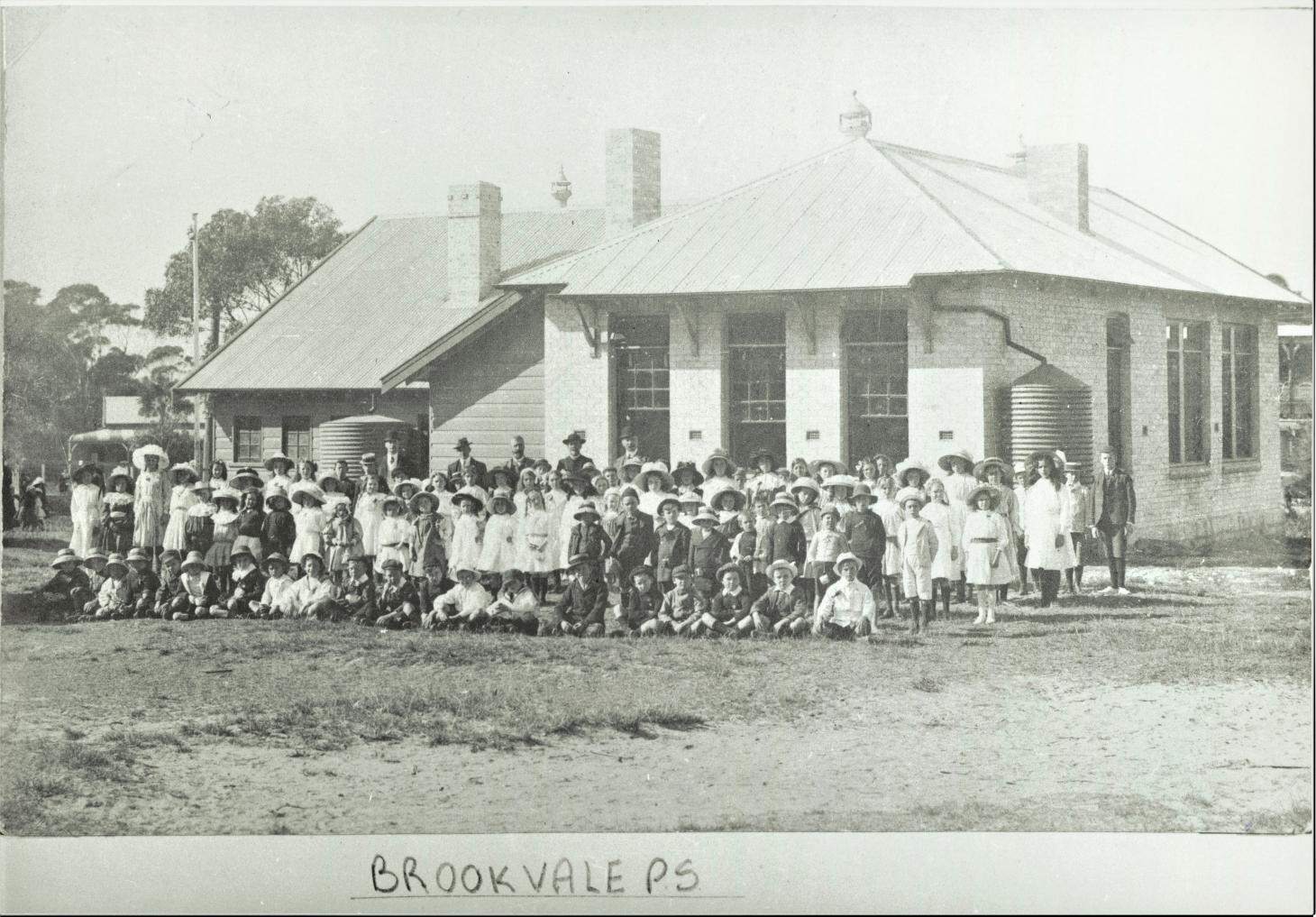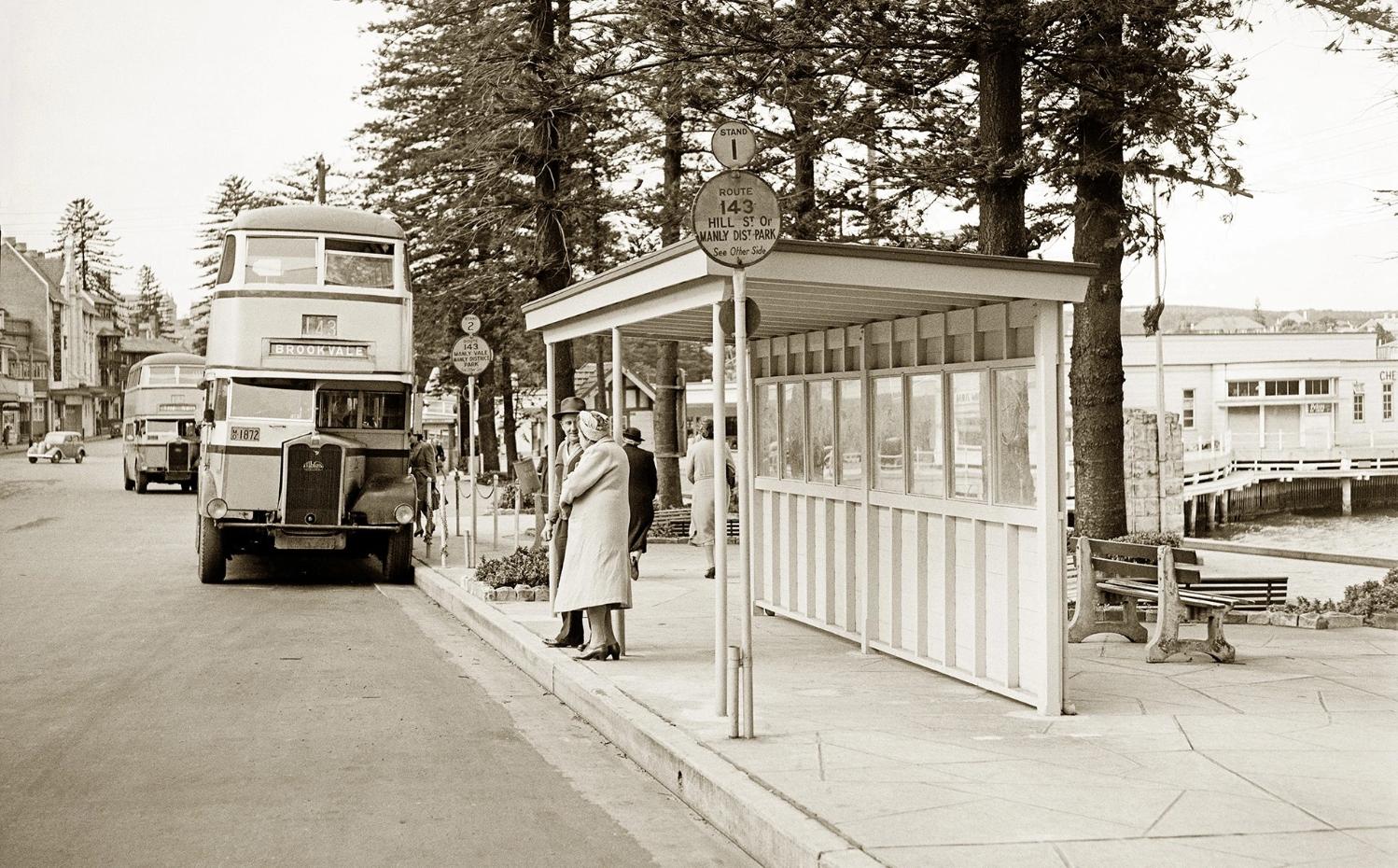April 3 - 9, 2022: Issue 533
Brookvale Oval Marks 111 Years As A Community Space With The Opening Of A New Stand And Performance Centre - Some Current + Older History
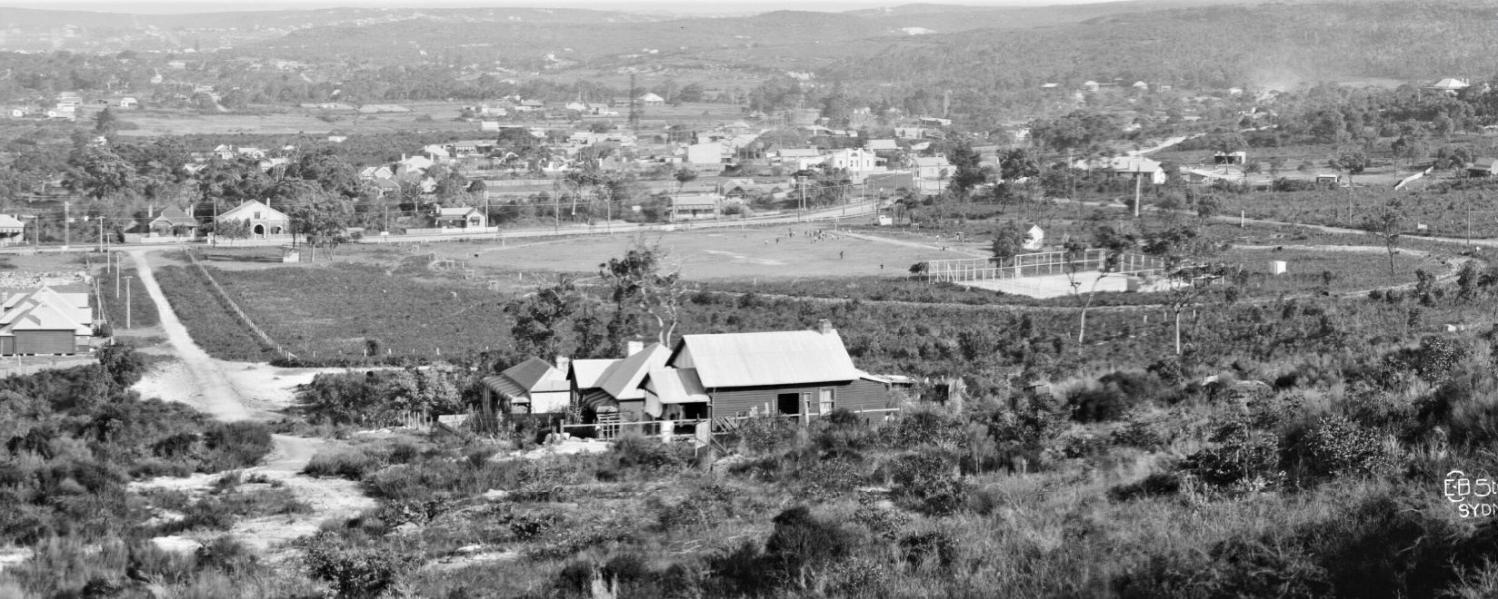
On Sunday, March 27th, 2022, the Manly-Warringah Sea Eagles celebrated the official opening of their new $32.5 million Northern Grandstand and Centre of Excellence at Brookvale Oval. A ribbon cutting ceremony for the grandstand, named after Manly’s greatest ever player and rugby league Immortal, Bob Fulton, and the Sea Eagles Centre of Excellence was held at half-time of the NRL game against the Canterbury-Bankstown Bulldogs.
A fantastic pyro display lit up the Bob Fulton Stand following the ribbon cutting which was attended by the Hon. Stuart Ayres, MP Minister for Tourism and Sport, Jason Falinski MP (Federal Member for Mackellar), Sea Eagles Chairman Scott Penn, and the Fulton Family led by Bob’s wife Anne and children Scott, Brett and Kristie.
The new facilities are one of several changes that have occurred on the site since Brookvale changed from a rural area to the industrialised and residential suburb we see today.
Brookvale's story begins with William Frederick Parker, who was born February 20th 1809 in London, England, and christened on March 18th, at St Mary's, in Stoke Newington. Middlesex. William sailed to the Cape of Good Hope in South Africa with his family on the Brig Garland around the time of his 11th birthday, arriving in the Cape Colony in March 1820. The family were not sponsored by the British government, but were independent 1820 Settlers and thus not eligible for land grants. After eight years there, in 1828, William and his brother Thomas sailed on to Australia with their parents, on the Brig Courier and settled in the colony of New South Wales, Australia.
In Sydney, William's father became employed as a gardener on the farm, Piercevale in the Hunter Valley, owned by William Carter, the magistrate in Sydney. His mother began working for William Carter as a servant at his Sydney house. William's younger brother Thomas lived with their father on the farm. In the New South Wales census of 1828, William was living in Clarence St, Sydney with his mother Elizabeth Parker, and he working as a carpenter.
William's father acquired a grant of 20 acres in Neutral 'Harbour' on the lower north shore of Sydney (now Neutral Bay) in 1831, although the deed was not formalised until 1838. The governor agreed to the purchase on condition that the land was developed for market gardening, and 2 convicts were assigned to help clear it. William's occupation of carpenter changed to farming and the Parkers worked hard and became successful market gardeners. William and his brother Thomas built a house on the Neutral Harbour property for their father, which still stands today. By 1851 William and his brother Thomas both had their occupations listed as 'stone-mason'.
Their father also acquired between 20 - 50 acres at North Harbour (Manly) where he and William's mother Elizabeth née Cannell lived in a stone house called Figtree cottage. In 1852, William's father sold this property to Henry Gilbert Smith, who is considered to be the founder of Manly.
On September 3rd 1835, William applied to purchase two parcels of land, of 50 acres each. They were situated on either side of present day Old Pittwater Road, Brookvale which was a mere track at the time. [AO Reel 1170]. The 2 lots came up for sale and William purchased Lots 28 and 29 on October 13th 1835, for £52, 10 shillings combined. The deeds were executed on March 9th 1836. [LTO SN46/65, SN46/67]. He later purchased a 58 acre parcel of adjoining land, advertised as Lot 80, for £72 and 10 shillings. The deed was executed on April 12th 1837 and William ended up with a total of 158 acres in Brookvale. [LTO SN63/171].
He was the first European settler to buy land in Brookvale and was assigned a convict named Thomas Beedham in 1838, to help clear the land. Family documents suggest he also bought 20 acres in Willoughby on February 4th 1836. In 1850, William built a home on his property, on Pittwater Road, near the corner of present day William Street in Brookvale. The street may have been named for him. He named the house ''Brookvale'', inspired by the brook (creek) which ran through the property.
William Frederick Parker was the first deacon of the Manly Congregational Church. In 1887, he donated land for a church hall to be built, where Sunday school was subsequently held. When the Department of Public Education started a school, after William Parker and others campaigned for it, schooling began in the church hall until other premises were found.
William continued living at his Brookvale Farm and working his land until just before the end of his life. In the census of New South Wales 1891, the year before he died, he was at Pittwater Rd, Manly, and his son William Francis Parker was living at Brookvale farm. William passed away of 'senile decay' (old age) at Brookvale farm near Manly, aged 83, on December 24th 1892. He was buried at the Congregational Cemetery at Manly on the 26th of December, where his wife lay and he shares a headstone with her and their daughter Sarah. His grave is in section S, plot 168. Probate was granted on March 9th 1893 in Manly, Sydney, Australia.
In 1879 William's son, William Francis Parker, built a stone cottage called Brooklands at the end of present-day Cross Street. All his own 9 children were born there and William Francis Parker lived there until his death on July 2nd 1927. Interestingly, as with McMahon's Point, there are several streets in Brookvale that bear Parker family names. William St runs parallel to Thomas St and intersects with Nicholson St (the birth name of William Frederick Parker's wife/ William Francis Parker's mother).
William Francis Parker passed away in 1927:
MR. W. F. PARKER.
The death occurred at Manly on Saturday of Mr. William Francis Parker, one of the pioneers of the district, where he had resided for 74 years. The late Mr. Parker's parents came to Australia from South Africa in 1828, and Mr. Parker senior died at Brookvale in 1892, at the age of 84 years.
Mr. W. F. Parker was born at Neutral Bay in 1845, and went to Brookvale in 1863. The old home was built in 1879. In 1887, the late Mr. Parker gave to the Church of England the site of the old St. Luke's Church on Pittwater-road.
The news of Mr. Parker's death reached a gathering, which was being held at St. Luke's Church, on Saturday afternoon, for the purpose of planting a number of memorial palms, and it was decided to plant one to Mr. Parker's memory.
The late Mr. Parker is survived by three sons and four daughters. The former are Messrs. William Parker (Leura), Jack Parker (Lismore), and Walter Parker (Glen Innes); and the daughters are Mrs. W. S. Murrell (Deewhy), Mrs. J. A. Dixon (Wedderburn), Mrs. T. R. Richards (Manly), and Mrs. C. C. Cunningham (Brookvale). MR. W. F. PARKER. (1927, July 5). The Sydney Morning Herald (NSW : 1842 - 1954), p. 8. Retrieved from http://nla.gov.au/nla.news-article16370336
In November 1883 the Malcolm family bought eight acres two roods 28 perches (3.5 hectares) from William Frederick Parker and in 1884 built a house almost opposite his. This house was called Brookvale House and was later known as Coolabah for a few years before reverting to its original name of Brookvale House in 1914.
Matthew Charlton, a publican for some time in Cumberland Street at The Rocks, purchased 200 acres (81 hectares) between Parker's holding and what is now Harbord Road, in 1837 and 1842. It was almost entirely marshland and he named his property Greendale. The name that is preserved today by Greendale Creek – which meanders from the high side of Warringah Road at Beacon Hill and flows down through Brookvale into Curl Curl Lagoon – and the street names of Green Street and Dale Street. The area between the hills and the sea was largely marshland and lightly timbered. There was already a place called Greendale near Mulgoa, and the name Brookvale was adopted by the postal authorities on the recommendation of the Town Clerk of Manly on May 18th, 1888, although the name persisted into the early years of the next century, as seen in Pittwater’s New Cycle Track Of 1901 – Manly To Pittwater.
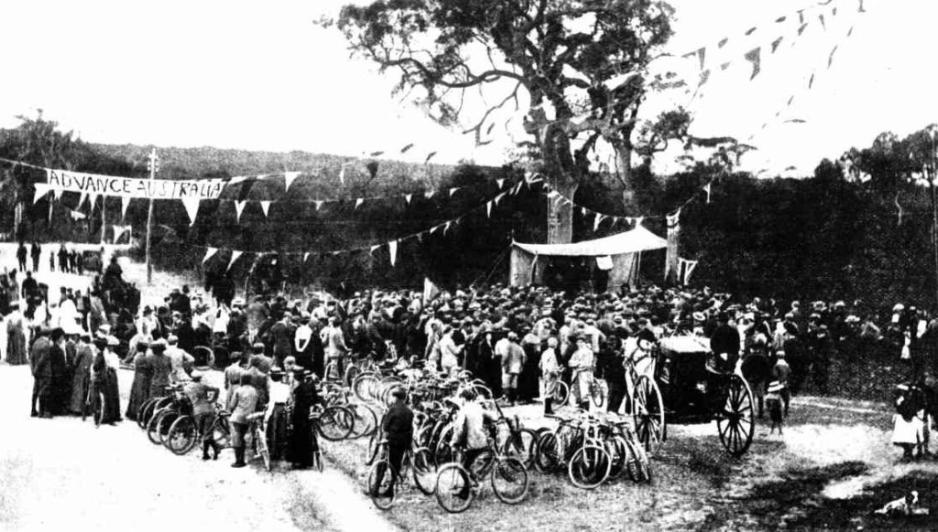
OPENING CEREMONY AT GREENDALE.— THE HON. MINISTER FOR WORKS DECLARING THE PATH OPEN - from The New Cycle Track—Manly to Pittwater. (1901, September 14). The Sydney Mail and New South Wales Advertiser (NSW : 1871 - 1912), p. 674. Retrieved from http://nla.gov.au/nla.news-article165237862
William Redman (1823-1882) owned three grants totalling 197 acres (80 hectares) on the north-western side of Pittwater Road, from Beacon Hill Road to Warringah Road and beyond.
In the late nineteenth century, the suburb of Brookvale was known as Greendale, after the Charlton property. The name Brookvale was later adopted from the name of the home built by the original grantee of the land, William Francis Parker.
Daniel Farrell was a son of John Farrell II. John Farrell II, the younger son of John and Martha Farrell of Newport, married David Foley’s daughter Mary Ann at St Mary’s Church on February 8th 1850, witnesses being Francis Collins and Mary Ann’s sister Joanna Foley, both residents of Pittwater.
John and Mary Ann’s first child, Sarah Ann, was born on 23 January 1850, and baptized on 9 February. She later married John Thomas Collins. Other children were John (John Farrell III, often known as Johnny, b.8 June 1851), Hannah Martha (b.24 Oct 1852, married John T. Malcolm 1881), Mary Jane (b.4 Jan 1854, married Sydney A. Malcolm 1881), James (b.1855 or 56), Daniel (b.3 June 1857), and Thomas (b.1858 or 59).
NSW BDMs - marriages and records provides:
2670/1881 MALCOLM JOHN FARRELL HANNAH M at MANLY
2668/1881 MALCOLM SYDNEY A FARRELL MARY JANE at MANLY
MALCOLM — FARRELL. —October 25, at Manly, by special license, by the Rev. Edmund Walsh, Sydney Alexander, second son of the late John C. Malcolm, Esq., of Sydney, to Mary Jane, youngest daughter of John Farrell, Esq., Manly. Family Notices (1881, November 22). The Sydney Morning Herald (NSW : 1842 - 1954), p. 1. Retrieved from http://nla.gov.au/nla.news-article13499558
John Malcolm (?-1842), chemist, was born in Scotland. He served as a surgeon's mate on board HMS Hobart, 1797-1799, and emigrated to Sydney in 1824. His son, John Cleland Malcolm (1832-1867), a seaman and businessman, married Mary Binning of Bowenfels, N.S.W., with whom he had four children: John Thomas (1854-1883); Sydney Alexander (1856-1891); Jean, known as Jenny (1859-?) and Alfred Ashmore (1862-?).
John Thomas and Sydney married sisters Hannah Martha and Mary Jane Farrell. Sydney Alexander Malcolm and Mary Jane, nee Farrell, married at Manly in 1881. They had three children, Jane (1885-1967), Pearl (1888-?) who died in infancy, and Bede Reginald Stanley (1889-1949).
John T Malcolm and Hannah had one daughter, Cicely, before he died in 1883 - the death registered at Ryde [ NSW BDM’s: MALCOLM JOHN 7174/1883 JOHN MARY registered at RYDE].
An item dated 1883, held by the State Library of NSW in the records of John Thomas Malcolm (1854-1883) being a metal stencil of his name and a metal plaque engraved to Alma Alice Ashmore for her birthday in 1883 (Call No.: MLMSS 6680/1) – State Library of NSW
In the Supreme Court of New South Wales.
ECCLESIASTICAL JURISDICTION.
In the estate, goods, chattels, credits, and effects of John Thomas Malcolm, late of Manly, near Sydney, in the Colony of New South Wales, Esquire, deceased, intestate.
NOTICE is hereby given, that after the expiration of fourteen days from the publication hereof in the New South Wales Government Gazette, application will be made to the Supreme Court of New South Wales, in its Ecclesiastical Jurisdiction, that letters of administration of all and singular the estate, goods, chattels, credits, and effects of the abovenamed deceased, may be granted to Sydney Alexander Malcolm, of Manly aforesaid, the eldest brother, and one of the next of kin of the said deceased.—Dated at Sydney, this tenth day of December, in the year of our Lord one thousand eight hundred and eighty-three.
DAINTREY & JONES,
Proctors for the Administrator,
87, Elizabeth-street, Sydney.
7676 6s. 6d ECCLESIASTICAL JURISDICTION. (1883, December 11). New South Wales Government Gazette (Sydney, NSW : 1832 - 1900), p. 6763. Retrieved from http://nla.gov.au/nla.news-article223975553
"Farrell’s Paddock" was the location of a public gathering in April 1910 to celebrate the extension of the tram line from Manly to the village of Brookvale, and had been used for other celebrations.
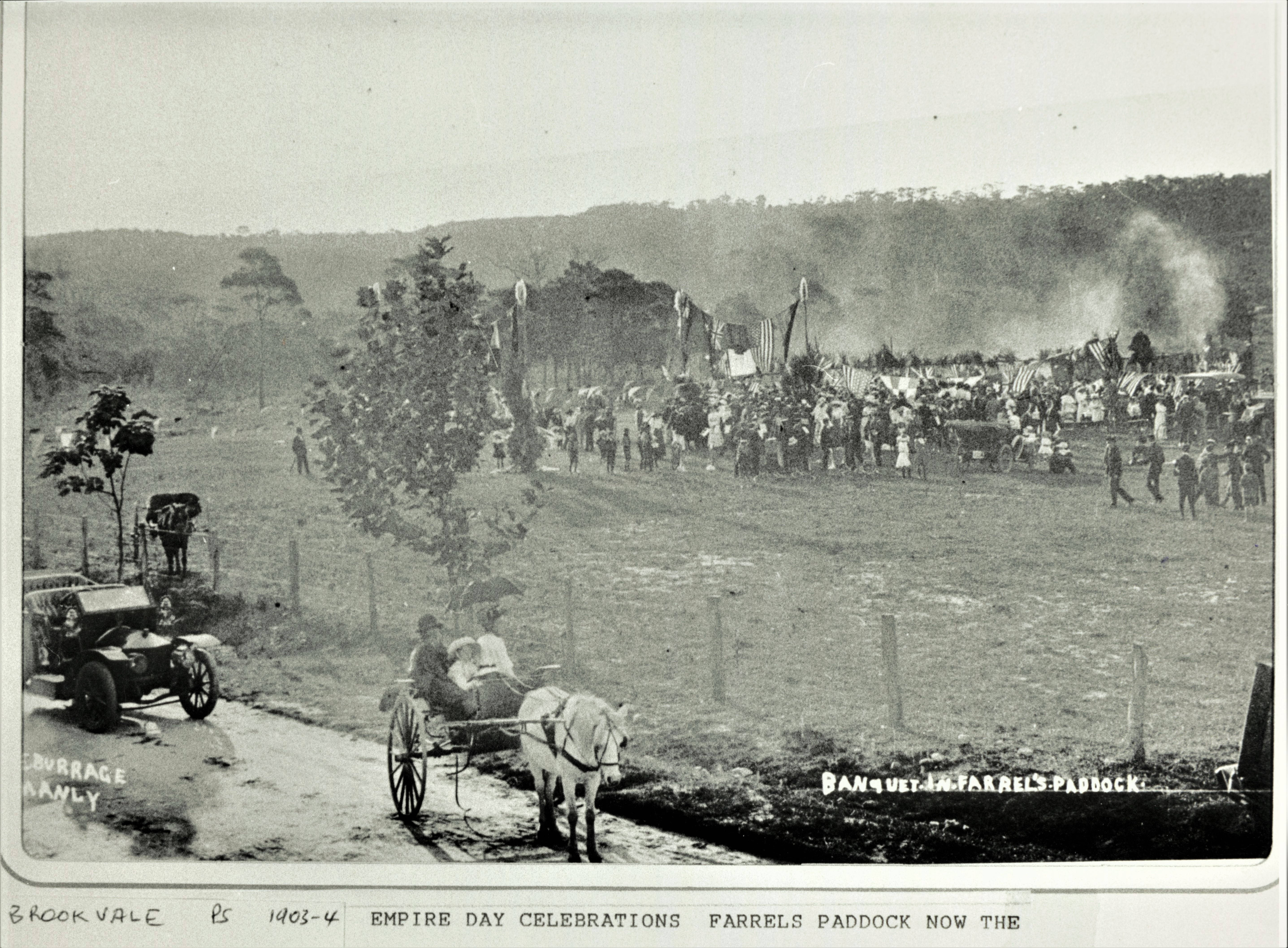
State Records and Archives: Empire Day celebrations, banquet in Farrell's Paddock circa 1903
The area known as Lot 47 A (Land Titles Office Vol. 1524 Fol. 122) was sold to Jane Malcolm in April 1907. Originally Brookvale Park was part of a larger portion of land purchased from the government by William Redman in 1857. When this land was subdivided in 1899 as 'Redman’s Estate', many of the unsold portions were taken by the Crown, which then offered them for sale as part of a second and larger Redman’s Estate subdivision in 1901.
Then in 1905, all of the land of which Brookvale Park was offered for sale as 30 choice lots. This subdivision wasn’t a success so the land became four lots fronting Pittwater Rd and two fronting Federal Parade, separated by the now defunct Prince Road that were eventually bought by Jane Malcolm in 1907.
Land title records show that between 1907 and 1911, Malcolm carried out a subdivision of Lot 47A into four blocks. From Alfred Road in the west to Pine Avenue in the east, these lots respectively measured 2 acres 2 roods 12 perches, 4 acres 1 rood 41⁄4 perches, 2 acres 0 roods, 22 1/4 perches and 2 acres 0 roods and 2 perches.
In the following year, the State Government reached agreement with Warringah Shire Council to acquire land for a park near the Shire's Offices. The acquired land plus a smaller parcel of land bought from Miss Jane Malcolm (later known as Jane Try) from Brookvale, was officially opened in 1911 as Brookvale Park. "Presumably inspired by local resident action at that time to secure a public park or village green for the suburb, Jane Malcolm presented to the Minister for Lands the largest of the four lots from Lot 47A (the lot measuring 4 acres 1 rood, 4 1/4 perches) – under a caveat that it only ever be used for public recreation purposes. Although the ‘dedication’ refers strictly to the first lot of land donated by Jane Try, subsequent acquisitions by Council of the other lots owned by Mr and Mrs Try were described specifically ''for the purposes of public recreation or for enlarging the Park".
The opening took place before the official documents had been exchanged, on March 4, 1911:
Official Opening of Brookvale Park.
There was a large gathering at the recent opening of the park at Brookvale, a nicely situated and progressive district near Manly. The ceremony was performed by Mrs. Nielsen, wife of the New South Wales Minister for Lands, there being a representative assemblage of residents. Mrs. Nielsen was met at the Manly pier by Dr. Arthur, M.L.A. and members of the reception committee and conveyed by motor car' to Brook vale. On arrival a presentation of a pair of silver scissors was made by Miss Malcolm, and after a few appropriate words Mrs. Nielsen cut the ribbon and declared, the park open. An adjournment was then made for refreshments. Councillor Ralston, president of the Warringah Shire occupied the chair and on behalf of the residents of ' the portion of the shire asked Mrs. Nielsen to convey to her husband (the Minister) their sincere thank' for his efforts, in settling the land question for the park area. The only toast was that of - "The Visitors," proposed by Councillor Quirk. The Warringah Shire Brass Band played throughout the afternoon.
The park which Brookvale has just opened was not obtained without a good deal of trouble by the Warringah Shire Council and local residents, who have been asking the Government to give them a park for many years. They have, however, at last had their wish granted in being given the site they wanted, but not without a great effort. The recreation ground is situated near the Warringah Shire' offices (of which shire Brookvale is a portion) and has an area of between six and seven acres. Of the cost the department paid two-thirds, the balance of one- third being met by shire ; council. Brookvale is nicely and picturesquely situated being encircled by high hills, and through it runs the brook, which like Tennyson's, "goes or for ever." Quite solid little village is growing up here from the Beacon-Hill, overlooking the village, the views being very fine. A notable event in the history of the Warringah Shire took place a' Brookvale about two months ago when the Manly to Brookvale tramway was opened ; by Mr. C. A. Lee , who was then Minister for Works. The line is to be ultimately, extended to Pittwater.-The Warringah Shire is a long narrow strip of coastal country extending from Manly Municipality to Barrenjoey. From this point it extends (westerly, bounded- by Cowan Creek to its and then in a southerly direction to Bantry Bay. The wonderful inland sea of Pittwater is included within its boundary. The scenery is varied and beautiful.
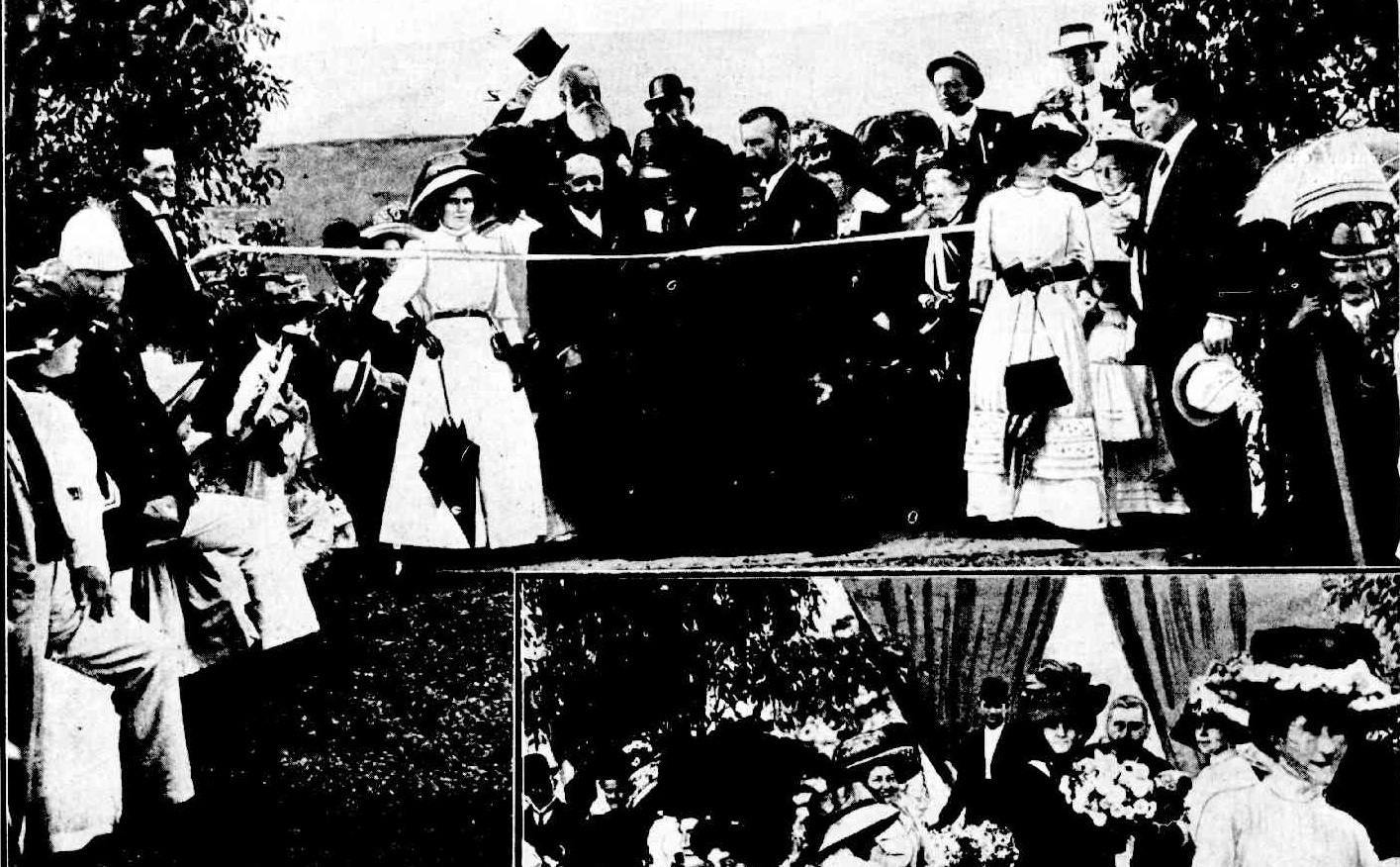
Official Opening of Brookvale Park (Warringah Shire) Mrs. Nielsen (wife of, the Hon. Niels Nielsen, Minister for Lands) Cutting the Ribbon.
.jpg?timestamp=1648797810241)
Presentation of Bouquet of Flowers to Mrs. Nielsen by Miss Pansy Malcolm-Official
Opening of Brookvale Park. (1911, March 15). Australian Town and Country Journal (Sydney, NSW : 1870 - 1919), p. 27. Retrieved from http://nla.gov.au/nla.news-article263764825
Jane married George Augustine (Gus) Try in 1911, with whom she had four children, who also had children - with relatives still among us today.
A POPULAR MANLY WEDDING.
MALCOLM-TRY.
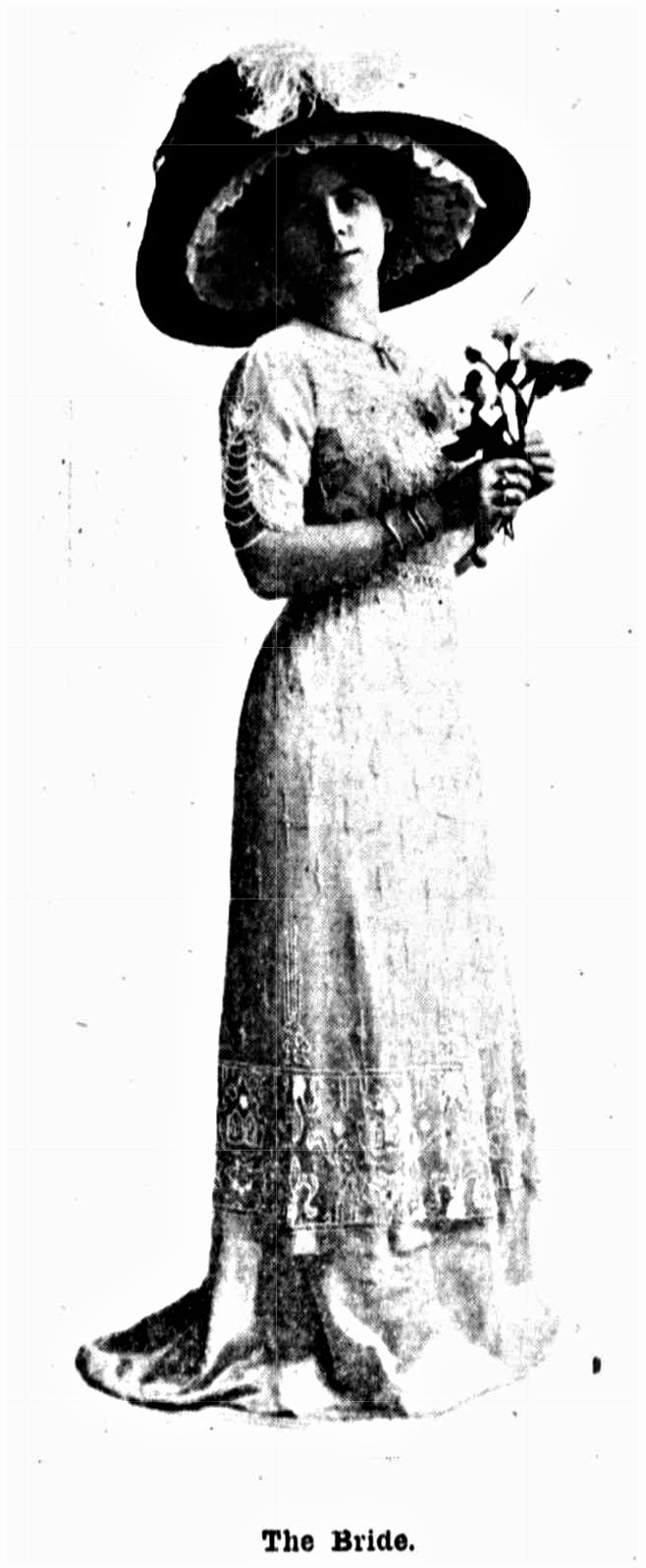
The Bride. (Photo)
A very interesting and pretty wedding was celebrated on Tuesday, April 18, at the Church of Our Lady of the Immaculate Conception, Manly, when Jane (Pansy), only daughter of Mrs and the late Mr S. A. Malcolm, of 'Coolabah,' Brookvale, was married to George Augustine, younger son of Mrs J. Try, of Double Bay, Sydney.
The Very Rev. Father Hayden performed the ceremony, Nuptial Mass was also celebrated by Father Hayden, assisted by Rev Fathers Keogh and Rev Dr. Tuomey. Haydn's 'Sixteenth Mass' was sung by a full choir. Miss Alice Bryant presided at the organ. Mrs. Florence Tierney sang Allitsen's 'A Song of Thanksgiving,' and Miss Emilio Lambert rendered Montague' Younger 's ' ' Ave Maria, ' ' Miss Alice Bryant, besides the usual wedding music, played the bridal music from Lohengrin. (Wagner) and Mendelssohn 's Wedding March’.
The church was beautifully decorated by Mrs. and Miss Hatclior, of Brookvale. The bride was given away by her undo, Mr. Daniel Farrell. She wore a beautiful gown of white ninon over softs satin, very clinging in effect, front of skirt' forming new apron drape, hand embroidered in crystal, from which fell a glorious flounce of point de graze lace, the same lace appearing on the dainty bodice, which was draped in a picturesque cross-over type. The bridal veil was of plain tulle over a Marie Antoinette cap of point de gaze. She also wore the bridegroom's gifts— a gold and blue enamelled wristlet watch and an aquamarine necklet, and carried a beautiful horseshoe bouquet of white flowers from Searl's, from which 'flowed streamers of white satin ribbon painted with the mono-grams, of the bride find bridegroom, and the words of the last verse of ' Because.'
The bridesmaid’s were Miss Trixie Eyles and Miss Annie Hillard, and they wore ivory' crepe de chine, trimmed with soft lace, bunches of pansies at waist; Empire sticks, with bundles of pansies at top; Charlotte Corday hats, with white rose ensuite. The bridegroom's gifts to them were gold Nellie Stewart bangles with lockets attached, initialled with bride and groom's initials and containing their photos, and bouquets of white' flowers, with hand-painted streamers. Little Thea Elly, cousin of the bridegroom, was trainbearer. She wore white shower of hail muslin frock, inlet with French vallace and insertion, and white satin ribbons, mob cap', with satin rosette. The bridegroom's gift to 'her was a gold cable bangle, 'locket attached. Mr. Cowley Try (brother of. the bridegroom) was groomsman. Mr. Maurice Walsh was best man, and the ushers were Messrs. Cape Amos, Alf Hobbs, R. Meecham and Horrie Ellen. The beautiful hand-embroidered white satin kneeling cushions for the bride and bridegroom wore presented by Miss Rogers. The bridesmaids' ribbons had pansies as well as the monograms painted on them.
After the ceremony the guests were conveyed to Mrs. Malcolm's beautiful home, ''Coolabah,'' Brookvale, by motor and coach, and were received in the vestibule by her and Mr. Dan Farrell and afterwards by Mr. and Mrs. G. A. Try in the drawing-room. The breakfast was held in a marquee on the lawn. A musical programme was presented, among the contributors being Miss Emilie Lambert, the mezzo-contralto, who' sang 'The Song of Thanksgiving,' 'Because,' .'A Farewell,' and ' The Way Home.'
Among those who accepted invitations to the wedding were: Dr. and Mrs. Thomas, Dr. and Mrs. Hall, Mr. Capo Amos, Miss Aileen Murphy, Mr. P. J. Carew, Mr. Alf red Hobbs, Mr. E. S. Vautin, Mr. J. Collins, Mr Chris. Sheehy, Miss Ida Short, Mr. Clem Ryan, Mr. R. Maclain, Miss Ivy Brookes Mr. and Mrs. C. B. Whetton, Miss Thomas, Mr. Maurice Walsh (Randwick), Mr. Bede Walsh (Randwick), Mr. E. E. Ellen, Mr. and Mrs. A. J, Holland (Yass), Mrs. E. E. Walsh (Randwick), Mr. and Mrs. F. Jackson (Toronto), Mr. and Mrs. L. Hagarty (Forbes), Mr. H. H. Axtens, Mrs. E. Fallon, Miss Addie Blatman, Mrs. J. N. Rogers, Miss Kitty Enright (West Maitland), Miss Clare Enright (West Mint! mid), Miss Vivienne Elderton, Miss Elderton, Mr. and Mrs T. Curran (Bathurst), Mr. J'. Flattery, Miss Eileen Donohoe, Miss King, Mr. N. Collins, Mr. J. Coiinellan, Mr. and Mrs. Fielder, Miss B. Purcell, Miss Moylan, Miss Davies, Miss K. Brown, Miss E. G. Rogers. A POPULAR MANLY WEDDING. (1911, April 27). The Catholic Press (Sydney, NSW : 1895 - 1942), p. 25. Retrieved from http://nla.gov.au/nla.news-article105015251
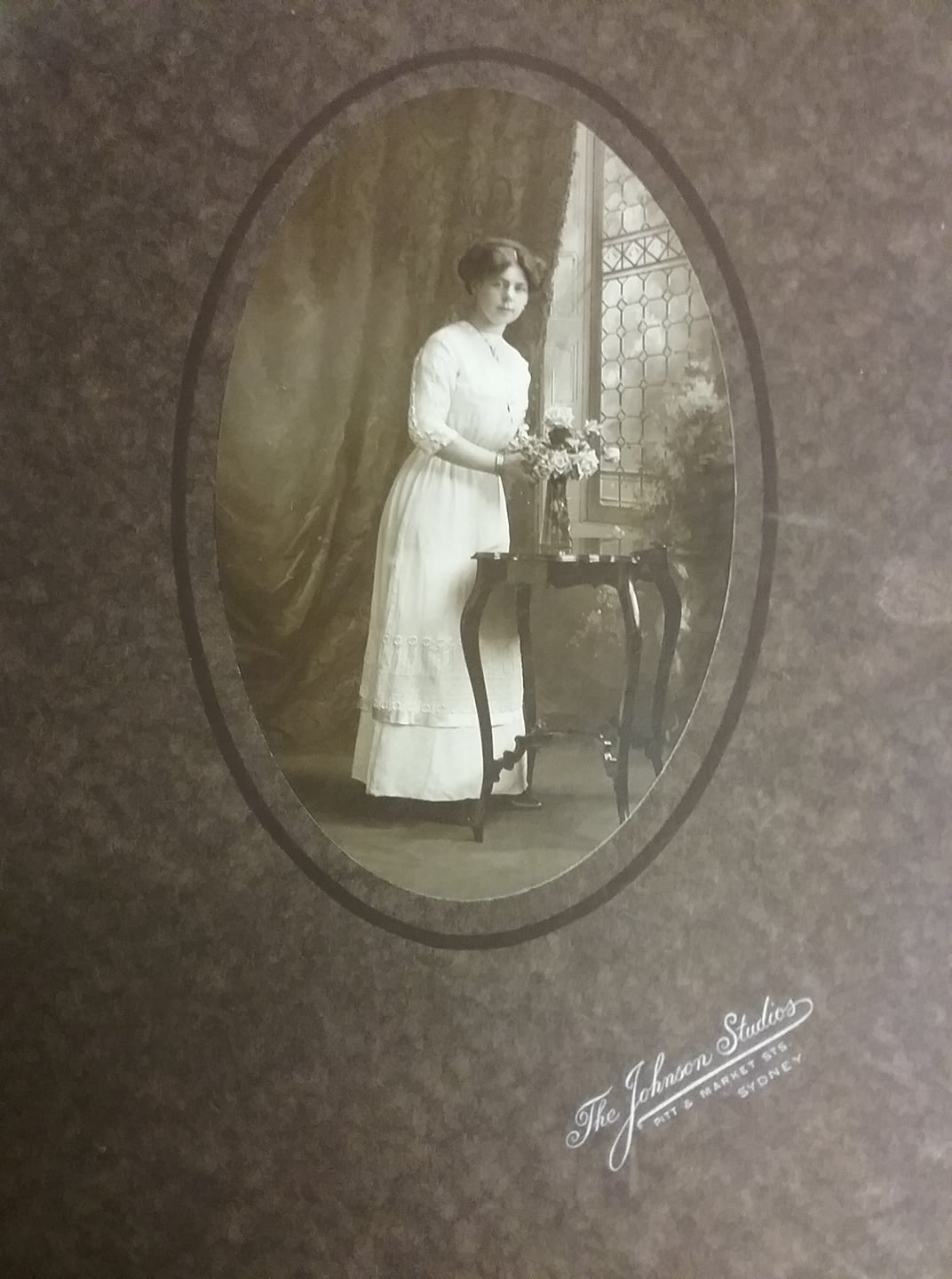
Jane Try, 1911, at Brookvale House. Photo courtesy Peter Try
It was in this area that Daniel Farrell built his stone house called "Inverness" which was later to become Manly Leagues Club in 1957, and which he had only just completed when he died. Daniel lived at Brookvale House with his sister’s family and cousin Emma Rogers, the carer for Mary Jane’s children Bede and Jane (Pansy). He passed away in December 1913:
FARRELL.-December 23, at his residence, Yorrowa, Pittwater-road, Brookvale, Daniel Farrell, aged 49 years. Family Notices. (1913, December 24). The Sydney Morning Herald (NSW : 1842 - 1954), p. 12. Retrieved from http://nla.gov.au/nla.news-article15482808
BROOKVALE'S HISTORIC HOUSE.
Mr. D. Farrell, who died at Brookvale yesterday; as a hobby set himself the task over 15 years ago of building with his own hands the big stone, house to be seen at Brookvale on the Pittwater-road. Through the years he patiently carried on the novel task, quarrying the stone, and doing everything possible for one man to do in connection with the building. Year by year the structure, which was always an object of interest to passers-by, slowly reared Itself up, and within the last few weeks workmen have been engaged in giving the house its final touches. Mr. Farrell thus died just as the fruition of his long and patient work was in sight. BROOKVALE'S HISTORIC HOUSE. (1913, December 24). The Sun (Sydney, NSW : 1910 - 1954), p. 1 (FINAL EXTRA). Retrieved from http://nla.gov.au/nla.news-article229345019
A HOUSE BUILT BY ONE MAN— PATHETIC END OF A 15 -YEAR HOBBY.
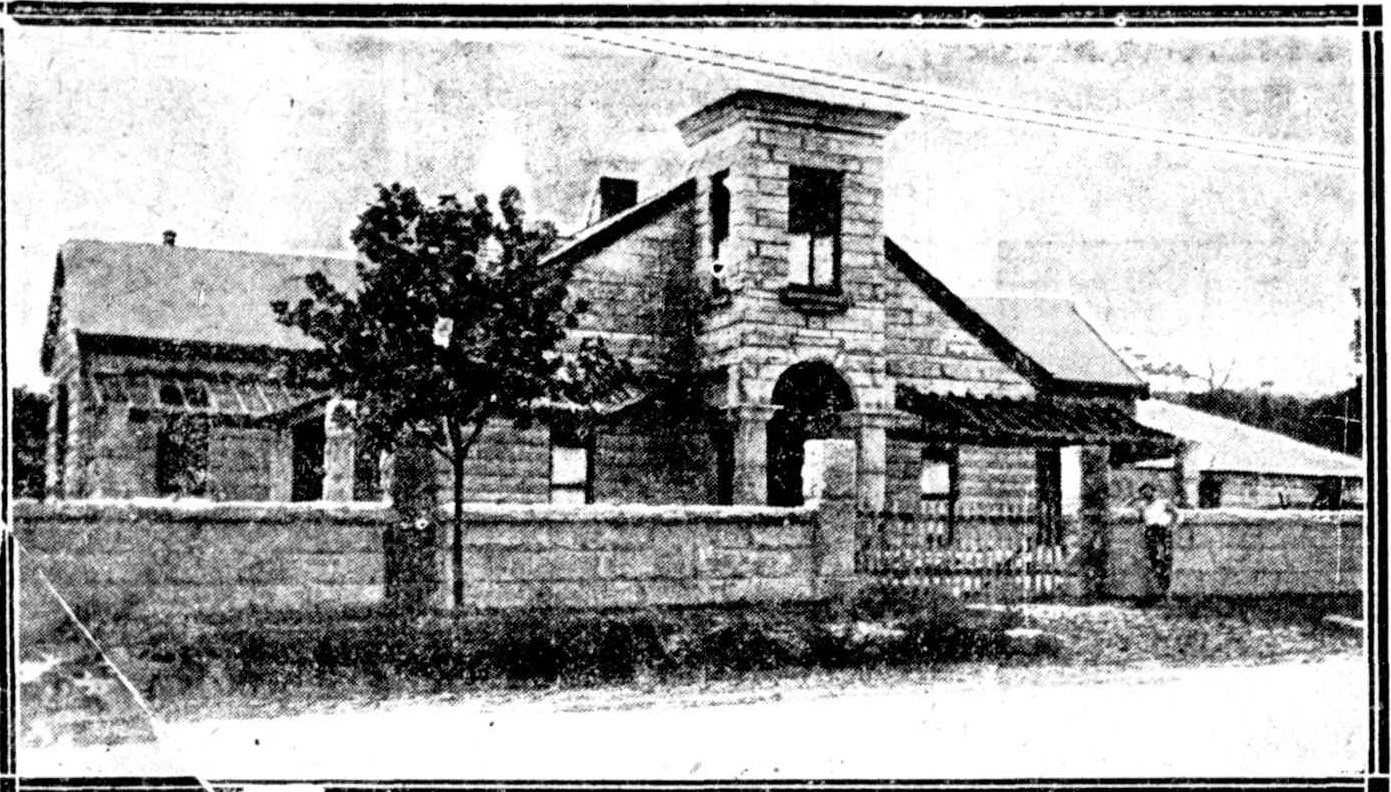
A pathetic Interest attaches to the death of Mr. D. Farrell, of Brookvale, which' took place on Tuesday. Fifteen years ago he undertook to build a house entirely by his own labor, and he died just as his work was about to be completed. Mr. Farrell was one of the interesting pioneers of the Pittwater district, of which he was a native.. His mother, the "oldest Inhabitant" of the neighborhood, .died only the other day, 'aged 92. The stone building, situated alongside the Pittwater-road, is always an object of interest to passers-by. Mr. Farrell quarried the stone, shaped it, and built the structure without any material help from anyone, working on it from day to day and year to rear.
The building is a capacious "T" shared -affair, designed by Mr. Farrell, with fresh air and good lighting as prime considerations. It has a frontage of nearly 70 feet, and a hall depth of 32 feet. The annexe at the back has also a similar depth. The three ground floor rooms are large and lofty, measuring 32 feet by 19, 18 by 18, and 16 by 18 respectively. Upstairs there is also a big room, and several comfortable nooks. Alongside the house, the walls of another large building, to be used for stable and motor-car purposes, were put up by Mr. Farrell. The dimensions of the buildings given afford a good idea of the exacting task accomplished by the patient, but enthusiastic, homebuilder. Mr. Farrell had an up-to-date smithy and forge on the .premises, fitted with steam , power. He also was his own engineer and tradesman, and was able to effect all his own wheelwright repairs, and other necessary requirements. A HOUSE BUILT BY ONE MAN—PATHETIC END OF A 15-YEAR HOBBY. (1913, December 28). The Sun (Sydney, NSW : 1910 - 1954), p. 12. Retrieved from http://nla.gov.au/nla.news-article229358925
Yarrawa/Yoorowa, his house in Pittwater Road, was for sale in February 1914 due to the bankruptcy of Daniel Farrell’s estate. Also for sale were an engine, cart, dray, crane, drill and two foxhounds. - SMH, 12 February 1914, p12
The Park was transformed into a showground within the first decade. Between 1919 and 1928 children from Brookvale School planted trees to commemorate Arbor Day and it was the setting for school sports days and Empire Day picnics. In 1921, the Brookvale Show was established with the formation of the Warringah Agricultural, Horticultural, Amateur Sports and Athletic Association.
Here locals would have seen the renowned 'Sunray' after which the Sunray Golf Club with a 9 hole golf course on the site of Narrabeen RSL was named.
A CHAMPION PONY.
At the recent Sydney Show Mr. P. B. McCauley, of Narrabeen (late of Gosford) won both 13.2 Pony Hunts with his grey pony, Sunray, and was 2nd in the 14.2 Pony Hunt, in this event jumping a hand out of his class and meeting such ponies as Thumbs Up (who jumped 7ft at the Show), and Blue Cam. Mr. McCauley also won both Pony Hunters events at the Manly and Warringah Shire Show the week before. Miss Eileen, daughter of Mr. McCauley, was awarded the red ribbon at Sydney Show for girl rider under 13 years, in which class there were 25 competitors. A CHAMPION PONY. (1925, April 23). The Gosford Times and Wyong District Advocate (NSW : 1906 - 1954), p. 6. Retrieved from http://nla.gov.au/nla.news-article166836894
During the 1930's the Council not only built new facilities they took advantage of the Work Relief scheme for those who had been made jobless by the Great Depression to improve Brookvale Park:
BROOKVALE SHOWGROUND IMPROVEMENTS.
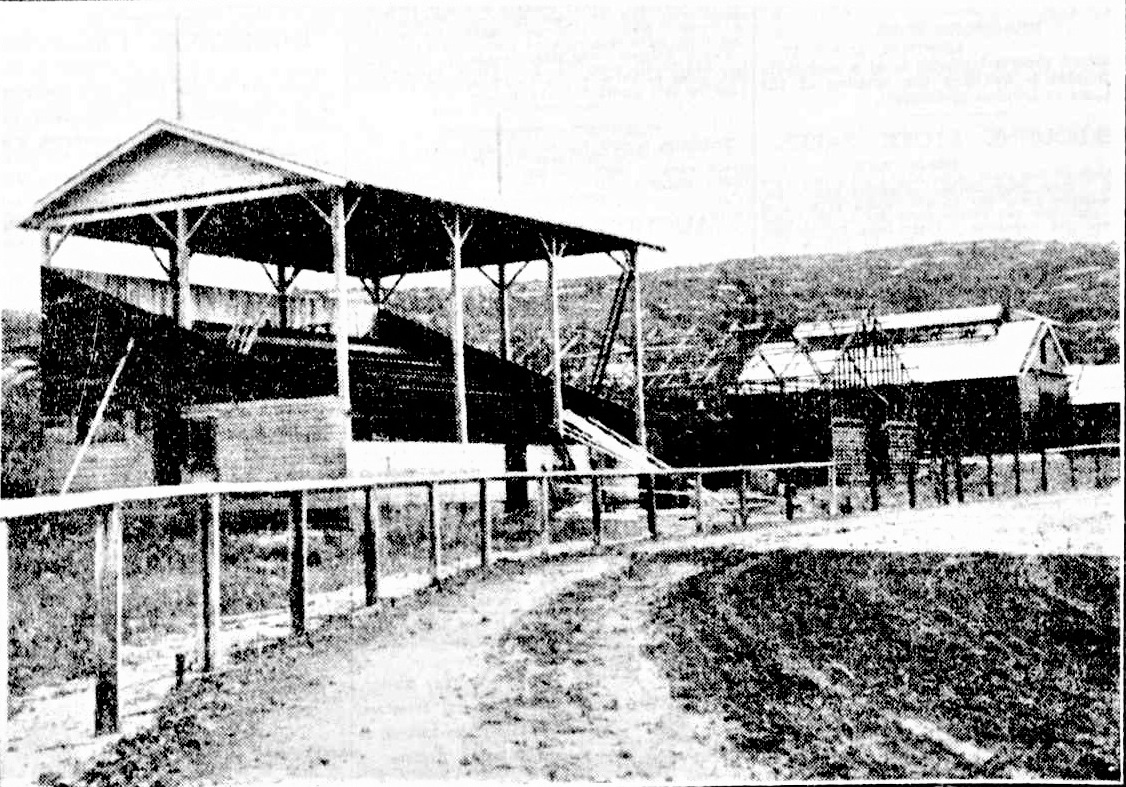
A new pavilion and other improvements costing £3000 have been almost completed in readiness for next month’s show. BROOKVALE SHOWGROUND IMPROVEMENTS. (1930, March 19). The Sydney Morning Herald (NSW : 1842 - 1954), p. 16. Retrieved from http://nla.gov.au/nla.news-article16634636
RELIEF WORK AT BROOKVALE.
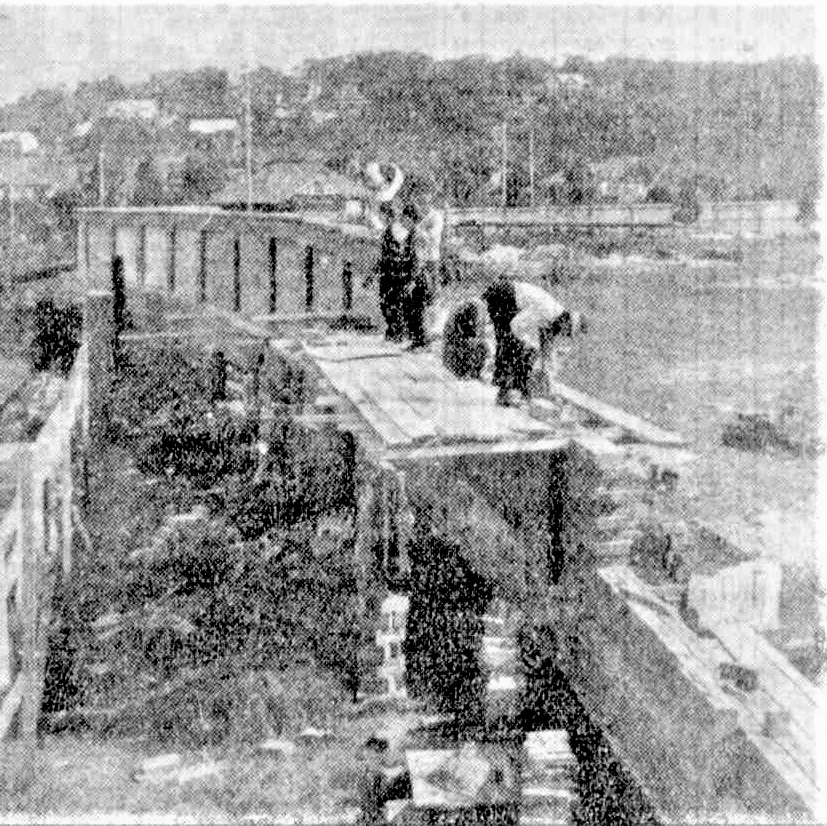
At work yesterday on a brick wall around the showground at Brookvale. RELIEF WORK AT BROOKVALE. (1933, July 21). The Sydney Morning Herald (NSW : 1842 - 1954), p. 12. Retrieved from http://nla.gov.au/nla.news-article16992768
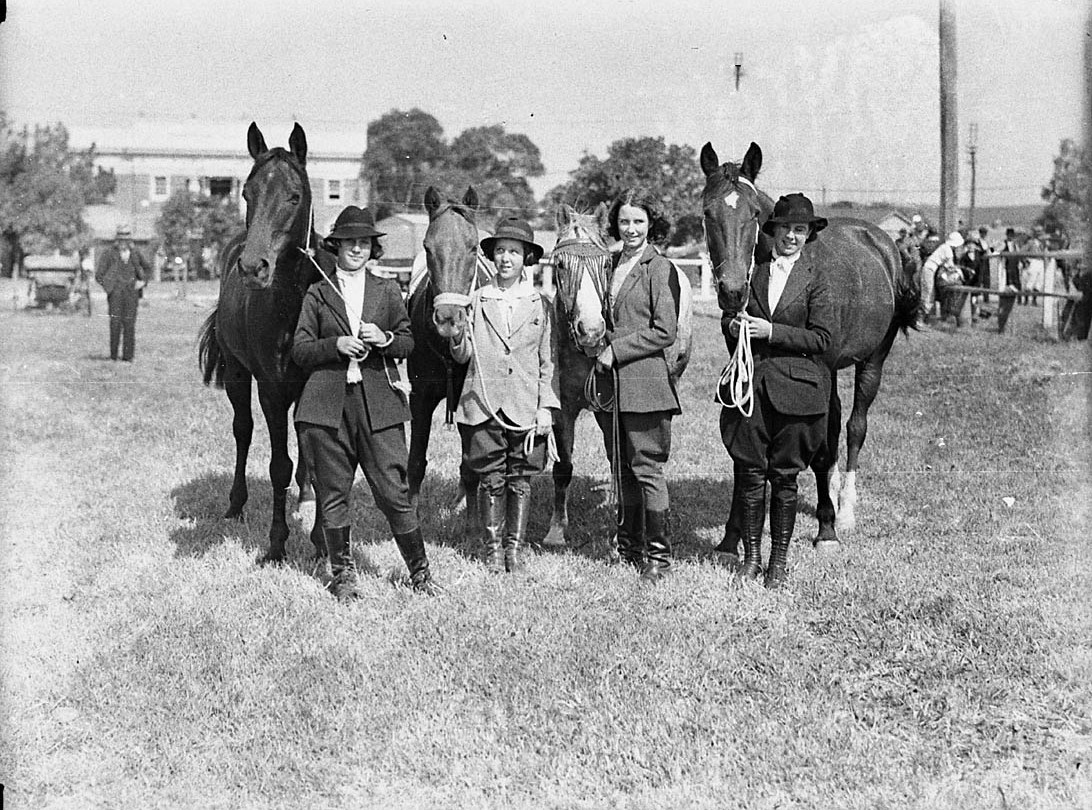
Brookvale Show - Brookvale Show - photographs by Sam Hood. Date: 20/4/1935, Home and Away - 12106, courtesy State Library of NSW
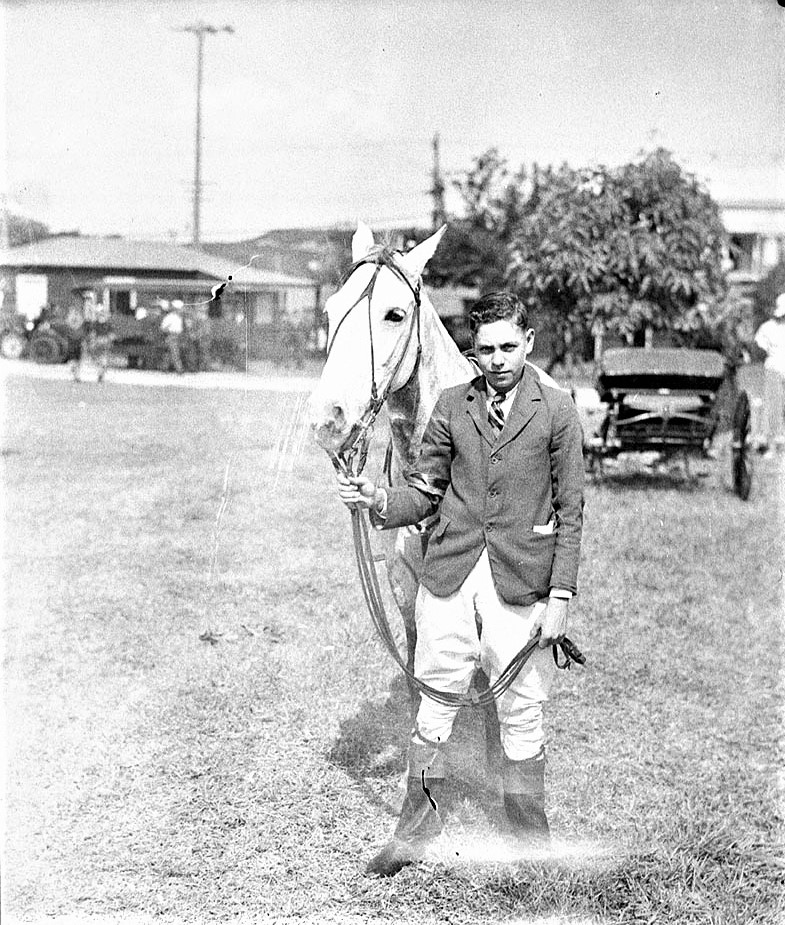
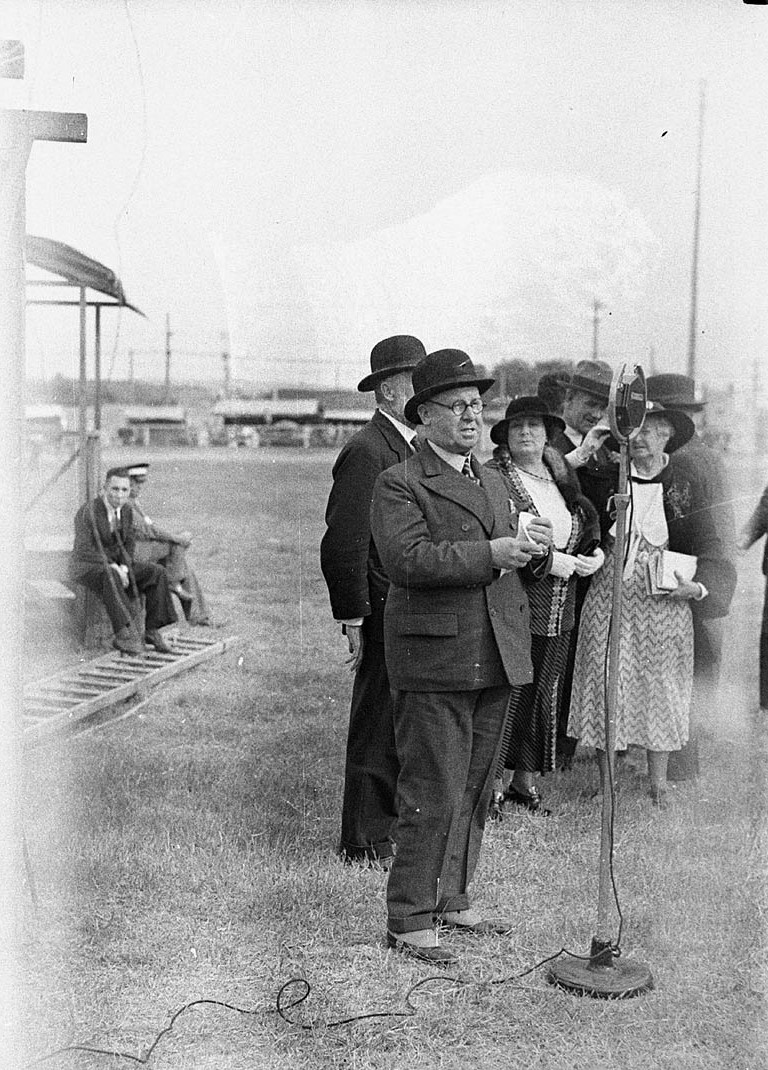
Over fifty annual shows were held at Brookvale Park before the horse events were moved to Frenchs Forest and then to St Ives Showground due to the damage the hooves did to the turf, by then the home of the Manly Warringah Sea Eagles. Trotting and ring events were features of early shows at Brookvale. The trotting track occupied a substantial area of the Park with lighting of the ring for night entertainment. Substantial improvements were later made to form a sporting oval by the addition of stands. Pavilions were constructed along Alfred Road to house show exhibits. Outside of the annual show period these pavilions were used for local church services and meeting rooms for the local community. They were also used by local bands as a place to practice. The Brookvale Show ended its long association with the Park in 1992, although a Brookvale Show was held at Brookvale Park in 2015.
Manly Council favoured rugby union and would not permit league to be played at Manly Oval. Warringah Council was more sympathetic to the rugby league cause and encouraged the playing of rugby league matches at Brookvale Park. Manly Warringah Junior Rugby League was formed in 1932, followed by the Manly Warringah Rugby League Club in 1946, with Brookvale Park as their home ground, after they were admitted into the first grade on Monday November 4th, 1946.
.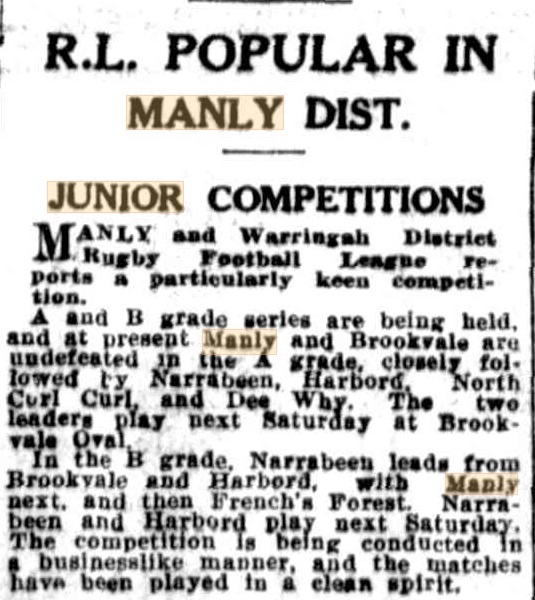
R.L. POPULAR IN MANLY DIST. (1932, May 26). The Labor Daily (Sydney, NSW : 1924 - 1938), p. 2. Retrieved from http://nla.gov.au/nla.news-article236975194
Manly-Warringah Sea Eagles Club history states:
After having their applications denied in 1937 and 1944, Manly Warringah was finally given the green light on the back of their district junior representative side winning the President’s Cup competition in 1946. With the President’s Cup considered as the entry level to the NSWRL first grade competition, Manly Warringah beat Norths, 12-8, in the President’s Cup final at the Sydney Cricket Ground on June 17 as the curtain-raiser to the opening Ashes Test between Australia and the British Lions.
With the support of ‘parent club’ Norths, who had plenty of Manly juniors throughout their graded teams, Manly Warringah presented their case at the special NSWRL general committee meeting on Monday, November 4, 1946, led by Manly JRL President, Bill Seymour, Secretary Jack Munro, and long-serving committeeman, Norman McNally.
Want Manly League Side
Manly - Warringah Junior Rugby League will -again ask the N.S.W.R.L. to admit Manly to first-grade football. They have invited two N.S.W.R.L. delegates to their annual meeting on Wednesday night to discuss the proposal. This will be the third time in three years that Manly have asked for a first-grade club.
Mr. Frank Freedman, a Manly- Warringah delegate said last night:
"We consider our claims for first-grade status this year stronger than ever. "Last year we supplied North Sydney with 10 first-grade players.
"These players want a Manly team.
"We can get the backing of Manly business people if the League gives us a break."
Mr. Freedman added that Manly wanted to encroach into the North Sydney district only as far as Mosman and The Spit. Manly-Warringah's secretary (Mr. Jack Munro) said: "We will pester the N.S.W.R.L. each year until we get first-grade status. "Manly, once a Rugby Union stronghold, is more Rugby League-minded these days.
"Last year we had 28 teams. This year we have 34 already." Want Manly League Side (1946, March 4). The Daily Telegraph (Sydney, NSW : 1931 - 1954), p. 17. Retrieved from http://nla.gov.au/nla.news-article248495592
RUGBY LEAGUE ADMITS NEW CLUBS.
The New South Wales Rugby League on Monday night admitted Parramatta and Manly-Warringah to the first-grade district competition. A condition of admittance is that the clubs secure home grounds-Parramatta at Parramatta oval, and Manly-Warringah at Brookvale.
Eastern boundary of Parramatta Club is from the pipeline on Woodville Road to the Raymond-Church Street junction at Harris Park, through Raymond Street . via Bridge, Allen' and Eleanor Streets to; the railway at Rosehill racecourse, then along the' western side of the railway to the Parramatta River. RUGBY LEAGUE ADMITS NEW CLUBS. (1946, November 7 - Thursday). The Biz (Fairfield, NSW : 1928 - 1972), p. 9. Retrieved from http://nla.gov.au/nla.news-article76260625
MANLY-WARRINGAH F. C.
A public meeting to launch the new Manly-Warringah District Rugby League Football Club will be held at the Luana Hall, Dee Why, on Wednesday, November 20, at 8 pm. All Rugby League players and supporters in the Manly-Warringah district are invited to attend the meeting. MANLY-WARRINGAH F. C. (1946, November 17). Truth (Sydney, NSW : 1894 - 1954), p. 12. Retrieved from http://nla.gov.au/nla.news-article168773261
UNION MEN MAY PLAY LEAGUE
Mr. W. Seymour, provisional president of the Manly-Warringah Rugby League Club, forecast last night that several Manly Rugby Union players would transfer to the League code to play with the new club.
"Rugby Union has had a strong-hold in Manly for many years," he said, pointing out that this coming season would be the first time that Rugby Union had been seriously challenged in Manly.
The club was officially formed at a public meeting at Deewhy, attended by 300 people. UNION MEN MAY PLAY LEAGUE (1946, November 21). The Sydney Morning Herald (NSW : 1842 - 1954), p. 9. Retrieved from http://nla.gov.au/nla.news-article18003113
EARLY LEAGUE START
Next season's Rugby League competition will open on April 12. This was decided by the League last night. Two new clubs - Manly-Warringah and Parramatta having been admitted to the competition, an earlier start than usual is necessary. Interstate matches against Queensland will be played in Sydney on June 14 and 16. New South Wales will play Queensland in Brisbane in July.
Colours approved for the new clubs are: Manly-Warringah, maroon with white band; Parramatta, blue with gold bar.
Parramatta will use dark knickers so as not to clash with Newtown. North Sydney's colours next season will be bright red with a black V.
Former international forward Arthur Oxford, was elected a life member of the League. EARLY LEAGUE START (1946, December 10). The Sydney Morning Herald (NSW : 1842 - 1954), p. 7. Retrieved from http://nla.gov.au/nla.news-article27902615
The team's first match in the big league was a home game at Brookvale Oval against Western Suburbs on April 12th 1947. Manly, captained by Max Whitehead and featuring others such as Johnny Bliss and Mackie Campbell (the grandfather of Manly's all-time leading try scorer Steve Menzies), played well against their more fancied opponents in that historic first match at Brookvale scoring three tries to one but narrowly losing the match 15–13 courtesy of a string of scrum penalties from referee Aub Oxford that allowed Wests fullback Bill Keato to kick six goals.
The lineup for that first home ground match was: A 'Bert' Collins, Jim Walsh, C 'Kelly' McMahon, Mackie Campbell, Johnny Bliss, Merv Gillmer, Gary Maddrell, James Hall, Keith Kirkwood, Max Whitehead (c), Pat Hines, Ern Cannon, Harry Grew. The coach was Harold Johnson.
The club's first win in the top league was a 15–7 victory against fellow newcomers Parramatta, at Brookvale Oval, May 31st 1947. By season's end, Manly had racked up just four victories from 18 rounds, which was enough to avoid the wooden spoon, with Parramatta winning one less game for the season. They also had more players:
R. League Gradings
MANLY-WARRINGAH
First Grade: G. Kellogg; J. Bliss, M. Campbell, C. K. McMahon, G. Willoughby; M. Gilmer, G. Madrell; J. Hall, Max "Whitehead (c, ) , K Kirkwood, P. Hynes, E. Cannon, R. Bull. Reserve Grade: A. J. Collins (c.); J. Walsh, K. Chapman, R, Jones, E. Bathgate, A. Kierle, G. Sullivan;' R. Smith, C. Sullivan; C. Robinson, D. Mathieson, T. Allerton, R. Bourke, F. Burge, E. J. Davies, H. Grew. Third Grade: T. Aldridge (c.); R. Beaumont, J. Lucan, J. ..Duffy, A. Barnes, F. Denham, T. Foster, J. Bradshaw; P. Jensen, J. Campbell, R. Schofleld, S. Raffo,; M. Barrett. R. Thornton, J. Hubbard, B. Seymour, W. Abbott. R. Spence, L. Johnson, A. Mullins. R Waterer. J. Dunford. R. League Gradings (1947, March 31). The Daily Telegraph (Sydney, NSW : 1931 - 1954), p. 29. Retrieved from http://nla.gov.au/nla.news-article248361001
The first supporters’ badge of 1947 depicts a sea eagle, with a maroon head and a white crest. Some had stated, even into the 1960's, that the stylised motif looked more like a seagull than a sea eagle. Nevertheless they were the sea eagles from the outset. Improvements in technology have allowed the sea eagle to look more like one.
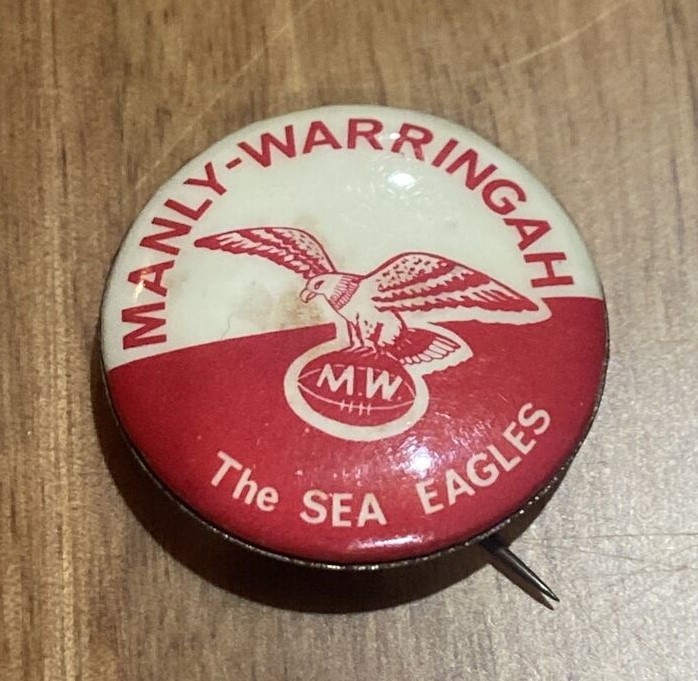
1960's Sea Eagles supporters badge
The 1948–1950 period saw the club languish at the bottom of the table, coming ninth, eighth and eighth out of ten. However, the club did have local junior Roy Bull selected for an Australian Test team which played against New Zealand in October 1949, thus becoming Manly-Warringah's first home-grown International. On 25 April 1951, a new attendance record at Brookvale was set at 9,447, with spectators overflowing onto the field for a match between Manly and South Sydney.
The growth in popularity of the Rugby League competition led to the re-forming of the oval into a rectangular field in 1970–71, with major earthworks undertaken to form spectator ‘hills’ on the eastern and southern sides of it. Following this came the construction of simple but large concrete grandstands on the western and southern boundaries of the field, and finally the Ken Arthurson Pavilion that linked the two. The construction of these facilities necessitated the removal of the original grandstand and the various exhibition halls and show pavilion, and with that, the termination of their use by community organisations and their hiring out for social functions.
Brookvale has three grandstands stretching the western and southern sides of the ground. The Jane Try Stand, running along the western side was the biggest of the three. It is also one of the few grandstands of major Australian stadiums to be named after a woman. The Ken Arthurson stand in the south west corner, was constructed in 1995. It is named after the long serving Manly, NSWRL and ARL administrator who is known as the "Godfather of Manly". The Lyons-Menzies Stand, formerly known as the Fulton-Menzies Stand, is located at the southern end of the ground is elevated with standing room underneath. Originally just referred to as the Southern Stand, it was renamed after two Sea Eagles club legends, Bob "Bozo" Fulton and Steve "Beaver" Menzies. At the time of the stands renaming, Menzies and Fulton held the club try scoring records with 180 and 129 respectively, though Fulton's record was surpassed by fullback Brett Stewart in 2013. The Fulton name was transferred to the new Bob Fulton stand, which opened in 2022 with a capacity of 3,000, and is situated at the front of the club's Centre of Excellence. A large hill runs along the eastern side. The ground's capacity is around the 23,000 mark.
The Jane Try stand houses those season-ticket holders of the Manly-Warringah Sea Eagles and is located on the western side of the ground. The Jane Try Stand opened in 1971 and was built at a cost of $250,000. The second grandstand addition to Brookvale Oval was the Southern Stand built in 1979, located at the Southern end of the ground. The Southern Stand houses some corporate facilities. This stand was renamed at the end of the 2008 season, becoming the Fulton-Menzies Stand after club legends Bob Fulton and Steve Menzies. A further structural addition to the ground, the Ken Arthurson Stand, was officially opened on Sunday June 14 1995. It was built at a cost of $3.3 million and seats 1,250 people. The stand is named for the greatest administrator in the club's history and contains corporate boxes as well as reserved seating for fans. The Ken Arthurson Stand is located in the south-western corner of the ground between the Jane Try and Fulton-Menzies stands. In its early days it was often referred to as the link stand as it linked the two grandstands at the ground. Ground improvements over the off-season following the 2011 premiership win included extending of the Jane Try Stand to run the full length of the western touchline and the inclusion of corporate facilities. Delays in the completion of these works forced the Sea Eagles to play away for the first 5 games of the 2012 season.
In February 2022 Manly officials confirmed plans to rename the southern stand at Brookvale Park the Lyons-Menzies Stand after Cliff Lyons and Steve Menzies.
Now, just over 111 years and a few weeks later, Brookvale Park has the new $32.5 million Bob Fulton Stand and Centre of Excellence.
The NSW Government contributed $20 million towards the project through its Centres of Excellence Programs.
The Centre of Excellence provides an integrated world-class high-performance training, administration and community facility for the identification, development and fostering of rugby league talent on the northern beaches.
Minister for Tourism and Sport Stuart Ayres said the opening of the Bob Fulton Grandstand and Centre of Excellence brings one of the most iconic grounds in rugby league into the 21st century.
“Love or hate the Sea Eagles, when rugby league is strong on the northern beaches, the game is strong,” Mr Ayres said.
“This new world-class high-performance facility will be the envy of sporting administrations around the world and ensure the Sea Eagles continue to challenge for NRL premierships.
“It’s fantastic to be able to officially open it during the Sea Eagles first NRL home game of the season with some of the most important people in the club’s history.”
Member for Wakehurst Brad Hazzard said the Sea Eagles Centre of Excellence would provide benefits across the entire community.
“Sport has a vital role in building community,” Mr Hazzard said.
“As Health Minister I saw the benefits of sport to the community during the pandemic.
“This facility is a win for the entire northern beaches community, not just rugby league.”
Member for Manly James Griffin said the opening of the Bob Fulton Grandstand and Centre of Excellence was fantastic news for everyone who loves rugby league on the Peninsula.
“The completion of the Sea Eagles Centre of Excellence means local juniors can now to be part of an elite program here on the northern beaches,” Mr Griffin said.
“No longer will they need to travel to fulfil their NRL dreams, with everything they need to make it to the top at their fingertips.”
Manly Sea Eagles Chairman Scott Penn said that the Club is extremely grateful to both the NSW and Federal Governments for their financial contribution to the Centre of Excellence and the Bob Fulton Stand project.
“We have worked extremely well together in delivering state of the art facilities, an elite training and playing field, and a magnificent grandstand providing great comfort and amenities for the community of northern Sydney to enjoy for many years to come,’’ Mr Penn said.
The NSW Government has contributed more than $110 million towards eight Centres of Excellence projects under the NRL Centres of Excellence Program and 2018 NSW Government Centres of Excellence Program.
All Centres of Excellence include dedicated female programs and facilities to improve pathways for women and girls in line with the NSW Government’s women in sport strategy, Her Sport Her Way. Each Centre of Excellence also includes multi-purpose facilities, enabling sporting organisations to expand community programs and better engage with their communities.
Those who went to watch last Sunday's game at Brookvale Oval all remarked on the new playing surface.
Our thanks to ALinda(Bencher) for posting these photos of last Sunday's (March 27, 2022) views of Brookie on the Silvertails Forum, taken from the Lyons-Menzies Stand, and of the Bob Fulton Stand opening at half time.
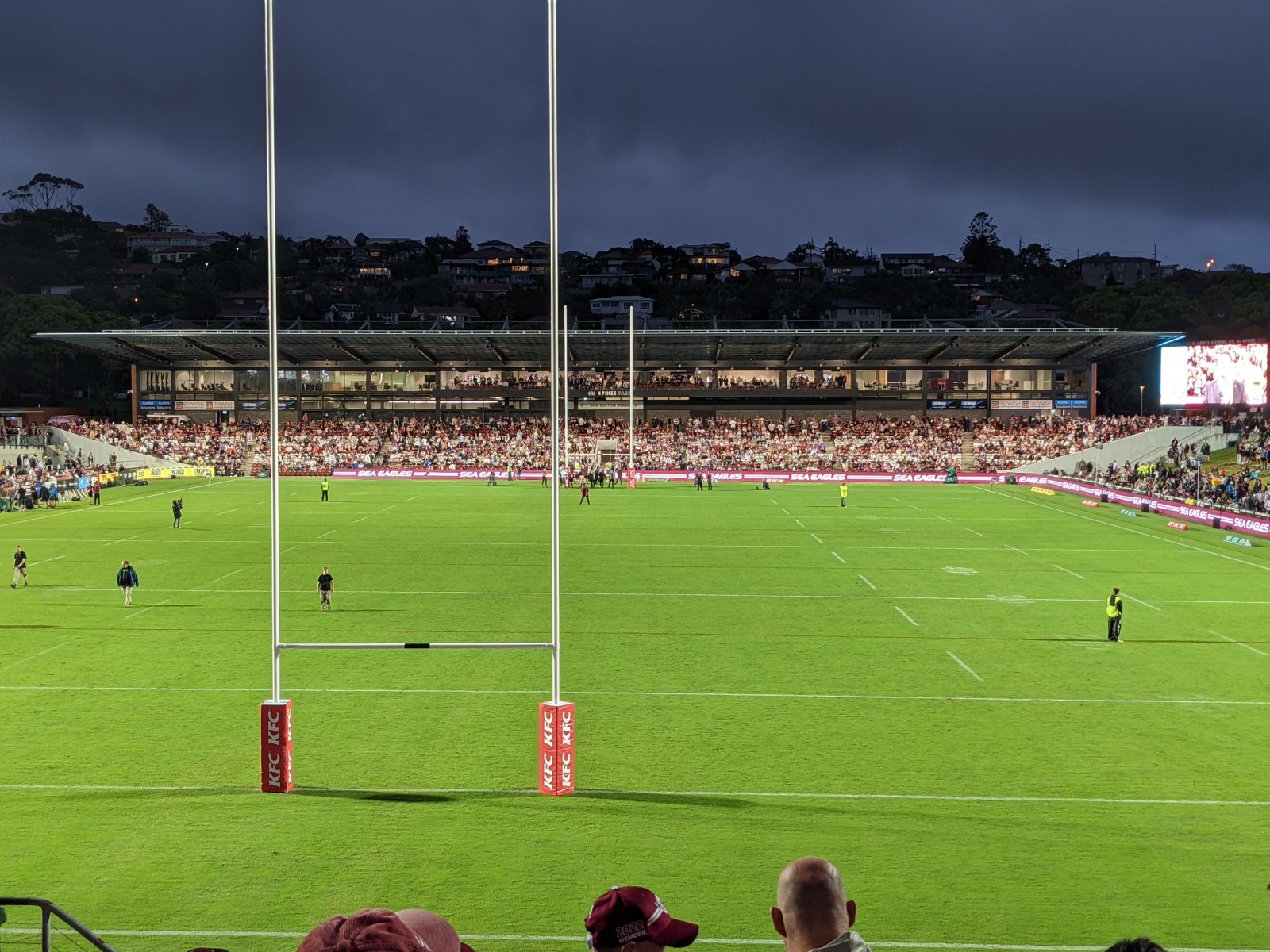
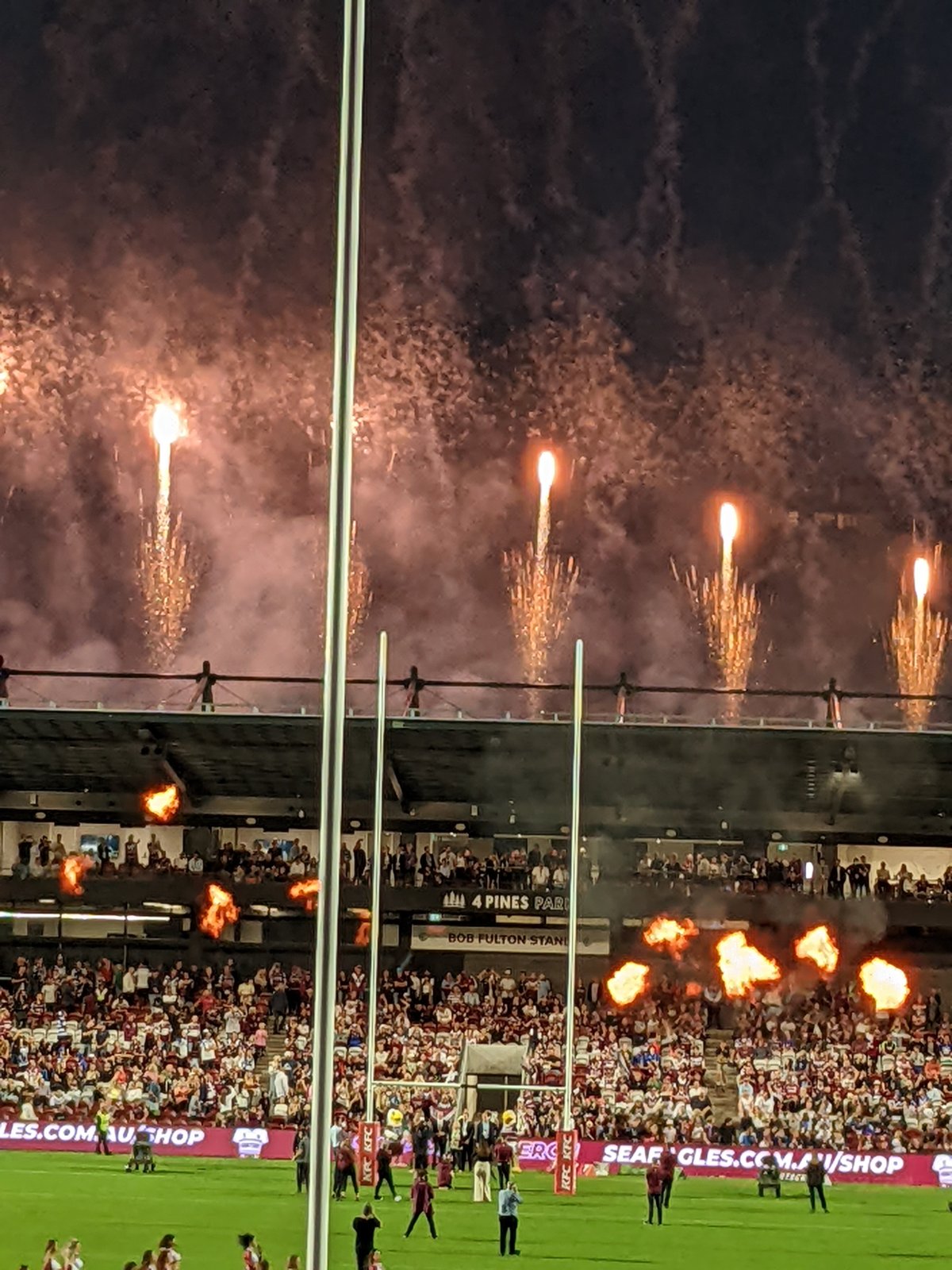
State records and Archives NRS-4481-3-[7/16382A]-St5966 | Government Printing Office d1_18442 - Panorama from Beacon Hill, Brookvale; 01-01-1916 to 31-12-1916
Notes - References
- TROVE - National Library of Australia
- Weicks, Maree, Brookvale, Dictionary of Sydney, 2008, http://dictionaryofsydney.org/entry/brookvale
- Manly Warringah Sea Eagles website
- NSW State Records and Archives
Farrell’s Paddock - Shelagh and George Champion noted:
“Christopher Skally and others sold 10 acres of their grant on 2 August 1847 to Isaac Lowry for £10. Isaac Lowry sold the 10 acres on 16 August 1847 to James Wheeler for £16. James Wheeler sold the 10 acres on 12 May 1853 to Henry Gilbert Smith. Smith sold the 10 acres on 28 February 1855 to Thomas Youll for £200. Youl mortgaged the 10 acres on 3 November 1858 to George Turnbull for £329. Thomas Youl defaulted, and the 10 acres then went to George Turnbull.
The executors of the Estate of the late George Turnbull sold the 10 acres on 12 November 1861 to Richard Driver (the younger) for £145. Richard Driver sold the 10 acres to James Farrell on 14 July 1871 for £100, being £45 less than the amount he paid for it. Why was Driver so generous? James Farrell conveyed the 10 acres as a gift to his sister Mary Jane Malcolm on 25 May 1886 for 10/-.
During the cattle-stealing period, when John Farrell II was burying the bones of calves his wife Mary Ann Farrell had killed, under fruit trees on the ten acres, the ten acre property was owned by Richard Driver, who was apparently the same solicitor who was defending the Farrells in court. John Farrell II and Richard Driver had known each other since childhood. John Farrell was only ever a tenant on the ten acres, although it was referred to from time to time as ‘Farrell’s Paddock’.
Following the acquisition of the land by Mary Jane Malcolm from James Farrell on 25 May 1886, their mother Mary Ann Farrell treated it as hers, no doubt thinking that it had belonged to her husband John Farrell. She gave it to Hannah Malcolm, and this was why Mary Jane Malcolm and her trustees took action in September 1903 to recover possession of the land.
Mary Jane Malcolm won the case and a Certificate of Title was issued to her under the Real Property Act on 3 December 1904. The land, usually referred to as ten acres, actually measured 9 acres 1 rood 25 perches.
Mary Jane Malcolm sold all except the house and its immediately surrounding land to Charles Henry Crammond of Petersham, estate agent, on 5 July 1905, and he proceeded to subdivide and sell the estate. The house and garden was sold by Mary Jane Malcolm to Crammond on 31 July 1905, and seems to have been occupied by Mary Ann Farrell, presumably as Crammond’s tenant, until she died in 1912. By way of a mortgage, it then passed to Ernest Stanley Bull on 12 December 1912. That was the end of the Farrell connection with this land.
Farrell - Malcolm Family Notes - Land at Clareville (from The Clareville/Long Beach Reserve: Some History Notes + Current Day Photos )
NSW BDMs - marriages and records provides:
2670/1881 MALCOLM JOHN FARRELL HANNAH M at MANLY
2668/1881 MALCOLM SYDNEY A FARRELL MARY JANE at MANLY
MALCOLM — FARRELL. —October 25, at Manly, by special license, by the Rev. Edmund Walsh, Sydney Alexander, second son of the late John C. Malcolm, Esq., of Sydney, to Mary Jane, youngest daughter of John Farrell, Esq., Manly. Family Notices (1881, November 22). The Sydney Morning Herald (NSW : 1842 - 1954), p. 1. Retrieved from http://nla.gov.au/nla.news-article13499558
John Malcolm (?-1842), chemist, was born in Scotland. He served as a surgeon's mate on board HMS Hobart, 1797-1799, and emigrated to Sydney in 1824. His son, John Cleland Malcolm (1832-1867), a seaman and businessman, married Mary Binning of Bowenfels, N.S.W., with whom he had four children: John Thomas (1854-1883); Sydney Alexander (1856-1891); Jean, known as Jenny (1859-?) and Alfred Ashmore (1862-?).
John Thomas and Sydney married sisters Hannah and Mary Jane Farrell. Sydney Alexander Malcolm and Mary Jane, nee Farrell, married at Manly in 1881. They had three children, Jane (1885-1967), Pearl (1888-?) who died in infancy, and Bede Reginald Stanley (1889-1949). Jane married George Augustine Try in 1911, with whom she had four children. The family lived at Brookvale House, Manly.
John T Malcolm and Hannah had one daughter, Cicely, before he died in 1883 - the death registered at Ryde [ NSW BDM’s: MALCOLM JOHN 7174/1883 JOHN MARY registered at RYDE].
An item dated 1883, held by the State Library of NSW in the records of John Thomas Malcolm (1854-1883) being a metal stencil of his name and a metal plaque engraved to Alma Alice Ashmore for her birthday in 1883 (Call No.: MLMSS 6680/1) – State Library of NSW
In the Supreme Court of New South Wales.
ECCLESIASTICAL JURISDICTION.
In the estate, goods, chattels, credits, and effects of John Thomas Malcolm, late of Manly, near Sydney, in the Colony of New South Wales, Esquire, deceased, intestate.
NOTICE is hereby given, that after the expiration of fourteen days from the publication hereof in the New South Wales Government Gazette, application will be made to the Supreme Court of New South Wales, in its Ecclesiastical Jurisdiction, that letters of administration of all and singular the estate, goods, chattels, credits, and effects of the abovenamed deceased, may be granted to Sydney Alexander Malcolm, of Manly aforesaid, the eldest brother, and one of the next of kin of the said deceased.—Dated at Sydney, this tenth day of December, in the year of our Lord one thousand eight hundred and eighty-three.
DAINTREY & JONES,
Proctors for the Administrator,
87, Elizabeth-street, Sydney.
7676 6s. 6d ECCLESIASTICAL JURISDICTION. (1883, December 11). New South Wales Government Gazette (Sydney, NSW : 1832 - 1900), p. 6763. Retrieved from http://nla.gov.au/nla.news-article223975553
In the Supreme Court of New South Wales.
ECCLESIASTICAL JURISDICTION.
In the estate, goods, chattels, credits, and effects of John Thomas Malcolm, late of Manly, near Sydney, in the Colony of New South Wales, Esquire, deceased, intestate.
PURSUANT to the "Trust Property Act of 1862": Notice is hereby given that all creditors and others having claims against the estate of the abovenamed John Thomas Malcolm, who died on or about the 23rd day of August, 1883, and letters of administration of whose estate were on the 9th day of April, 1884, granted to Sydney Alexander Malcolm, of Manly aforesaid, Esquire, are hereby required to send in particulars of their claims to Messieurs Daintrey and Jones, of 33, Castlereagh-street, Sydney aforesaid, the solicitors for the said administrator, on or before the 12th day of June next, after which date the said administrator will proceed to distribute the assets of the said John Thomas Malcolm, having regard only to the claims of which notice shall have then been given.—Dated this 12th day of May, a.d. 1884.
DAINTREY & JONES,
Proctors for the said Administrator, 33, Castlereagh-street, Sydney. ECCLESIASTICAL JURISDICTION. (1884, May 13). New South Wales Government Gazette (Sydney, NSW : 1832 - 1900), p. 3103. Retrieved from http://nla.gov.au/nla.news-article221671209
In the Supreme Court of New South Wales.
ECCLESIASTICAL JURISDICTION.
In the estate and effects of John Thomas Malcolm, late of Manly, near Sydney, in the Colony of New South Wales, Esquire, deceased, intestate.
NOTICE is hereby given, that the accounts of the administrator of the estate and effects of the abovenamed deceased, has this day been filed in my office, Supreme Court-house, King-street, Sydney; and all persons having any claim on the said estate, or being otherwise interested therein, are hereby required to come in before me at my said office, on or before the 11th day of September next, and inspect the same, and if they shall think fit object thereto, otherwise if the said account be not objected to, the same will be examined by the Prothonotary and passed.—Dated this 19th day of August, a.d. 1884.
For the Prothonotary, T. W. GARRETT, Daintrey & Jones, Ecclesiastical Clerk. Proctors for the Administrators, 33, Castlereagh-street, Sydney. ECCLESIASTICAL JURISDICTION. (1884, August 22). New South Wales Government Gazette (Sydney, NSW : 1832 - 1900), p. 5736. Retrieved from http://nla.gov.au/nla.news-article225588001
Hannah passed away in 1934:
NSW BDM's: MALCOLM HANNAH M 4928/1934 JOHN MARY A MANLY
MALCOLM. - January 25, 1934, at a private hospital, Manly, Hannah Martha Malcolm, dearly loved mother of Cicely (Mrs Parsonson), and grandmother of Mary and Irene, aged 80 years. R.I.P. Family Notices (1934, January 26). The Sydney Morning Herald (NSW : 1842 - 1954), p. 8. Retrieved from http://nla.gov.au/nla.news-article17043360
LEFT £23,941
Manly Widow's Estate
The New South Wales estate of the late Hannah Martha Malcolm, widow, of Manly, who died on January 25, 1934, aged 80 years, has been sworn for probate purposes at £23,941. She appointed as her executors and trustees her son-in-law, James Whatmore Parsonson, of Sydney, marine officer, and the Perpetual Trustee Co., Ltd. One-fourth of the net estate is to be held in trust for James Whatmore Parsonson, and the remaining three-fourths, also in trust, in equal shares, for the children of the daughter of the testatrix, Cicely Campbell Anne Parsonson, the wife of James Whatmore Parsonson. The will stated that the testatrix had already made ample provision for her daughter, Cicely Campbell Anne Parsonson. LEFT £23,941 (1934, April 26). The Sun (Sydney, NSW : 1910 - 1954), p. 21 (FINAL EXTRA). Retrieved from http://nla.gov.au/nla.news-article230536503
In the Supreme Court of New South Wales.
PROBATE JURISDICTION.
In the will of Hannah Martha Malcolm, late of No. 51 Pine-street, Manly, in the State of New South Wales, widow, deceased.
PURSUANT to the provisions of the Wills, Probate and Administration Act, 1898, of the Testator's Family Maintenance and Guardianship of Infants Act, 1916, and of the Trustee Act, 1925: Notice is hereby given that all creditors and other persons having any claim or demand upon or against the estate or otherwise interested in the property and assets of the abovenamed deceased, who died at Manly, on the 25tli day of January, 1934, and probate of whose will was granted by the Supreme Court of New South Wales, in its Probate Jurisdiction, on the 24th flay of April, 1934, to James Whatmore Parsonson, of No. 1 Pine-street, Manly (clerk), and Perpetual Trustee Company Limited, of 33-39 Hunter-street, Sydney, are hereby required to send, on or before the 21st day of July next, full particulars of their claims and demands upon the said estate or in respect of the said property and assets or any part thereof to Perpetual Trustee Company Limited, 33-39 Hunter-street, Sydney, at the expiration of which time the said James Whatmore Parsonson and the said Perpetual Trustee Company Limited, as executors of the will of the said deceased, intend to proceed to administer the said estate and to convey and distribute the property and assets of the said deceased to and among the parties and persons entitled thereto, having regard only to the claims and demands of which they shall then have notice; and the said James Whatmore Parsonson and the said Company will not, in respect of the property and assets or any part thereof so conveyed or distributed, be liable to any person of whose claim they shall not have had notice at the time of such conveyance or distribution.—Dated this 9th day of May, 1934.
For Perpetual Trustee Company Limited,
R. COPLAND LETHBRIDGE,
- Managing Director. Gr. M. Laurence and Son, Proctors. 3190 £1 14s. 6d PROBATE JURISDICTION. (1934, May 18). Government Gazette of the State of New South Wales (Sydney, NSW : 1901 - 2001), p. 1956. Retrieved from http://nla.gov.au/nla.news-article223059941
It would appear the 60 acres of land at Clareville was given by her brother so soon after the loss of her husband after they married, and with a baby to feed, so this lady had something. The Historical Land Records Viewer (HLRV) provides:
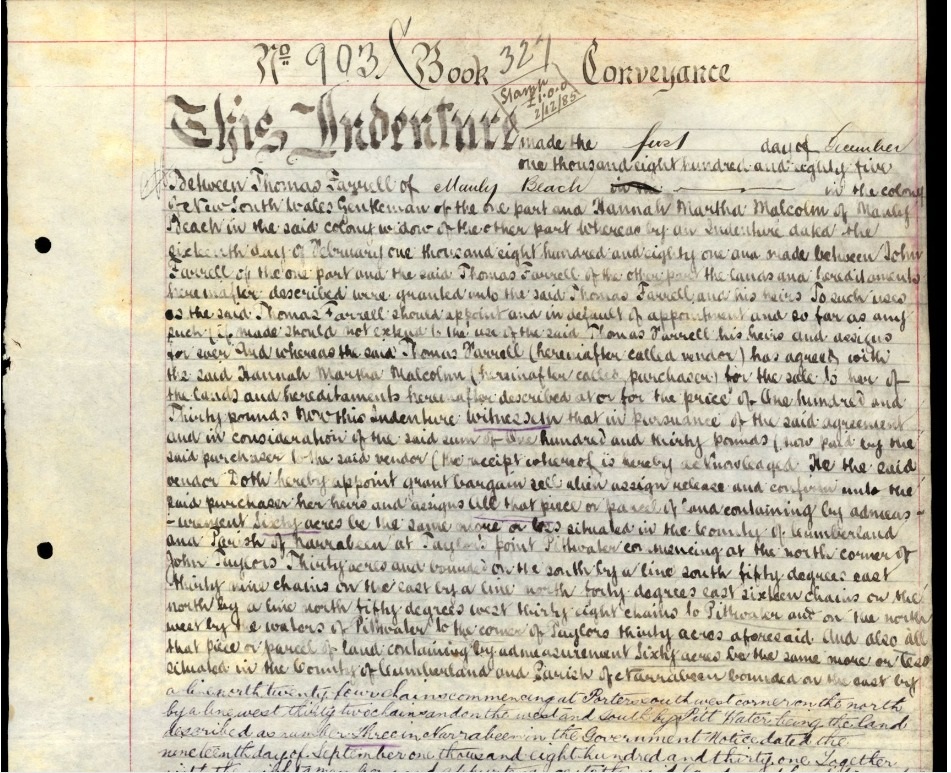
.jpg?timestamp=1628129039607)
About People.
The president of the Warringah Shire Council (Mr. William Hews) is one of the best known and most popular residents of the shire. 1-Ie resides at French's Forest, where he has been engaged in the brick-making industry for some years. He is also well known in Manly.
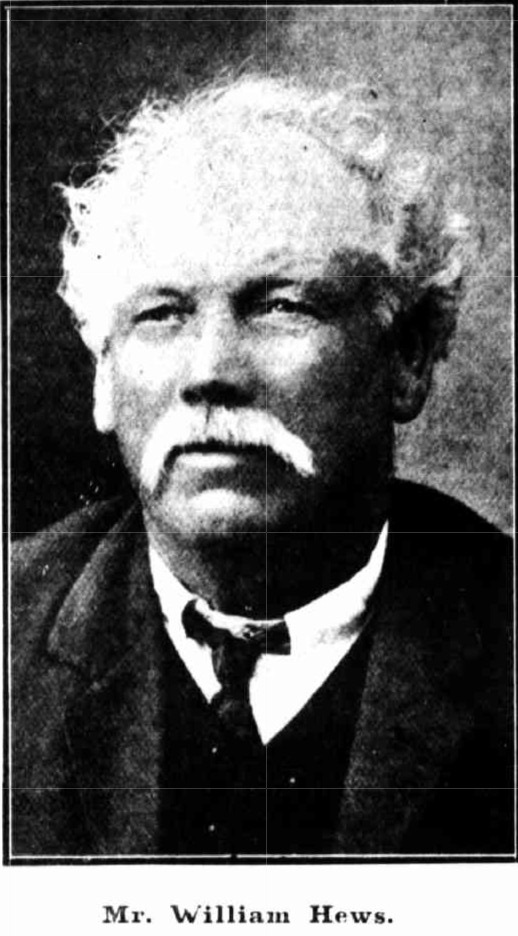
William Hews was born at Brighton, on May 1.3, 1844. With his parents he landed in Sydney in December, 1852, and started to work as a lad of 0 for the Hon. George Lord at his tweed factory at Botany. He had charge of a machine called "a devil," which was used for (easing the wool. Mr. Hews' parents left the city, and went on the land, but had a bitter experience. Soon after settling down a flood came and washed everything away, leaving the settlers penniless. Returning to the city, and while engaged in building the line between Parramatta and Liverpool (in the employ of his father) he had the misfortune to cut off his big toe.
Droving was Mr. Hews' next venture, and he contracted to take a mob of horses to Brisbane. For the whole of the journey — some six weeks — it rained in torrents, and the trip had to be gone through in wet clothing. A contract was taken from Mr. W. B. Tooth to convey two loads of merchandise with 20 bullocks to a station on the Ballonne River. While on the road his mate left him with about £500 worth of goods and all the animals. However, he found another man on the road, taught him how to drive bullocks, and pulled through all right. With a blackfellow for a mate we next find Hews eight miles from a station getting timber for erecting the station buildings. A peculiarity about the fencing was that the posts were 10ft long and leant outwards so as to prevent dingoes running up the posts and getting into the yards.
Mr. Hews was employed- in conveying stone from the Pyrmont Quarry to Goldsbrough-Mort's store, Circular Quay, Town Hall, St. Mary's Cathedral. City Bank. Post Office, and Vickery's and Bull's buildings. While engaged on the Sutherland-Holt Estate, he was a witness of a sad accident. The boat was being loaded one very cold Saturday morning, when the craft turned turtle, and nearly everyone on board was drowned.
The gold fever also took hold of him, and the Snowy River found him trying his luck. While there he went through some peculiar experiences. One man was lucky enough to find a good claim in the bed of a creek, and he had to mount guard on the bank with revolvers. About 33 years ago he started manufacturing bricks at French's Forest, and during the bank crisis experienced a very bad time; in fact, could not place a brick for three years. He has enjoyed very good health, and is still very active for his years and in full possession of all his faculties.
Some four years ago, in trying to stop a bolting horse, he fell under the vehicle (a dray loaded with sand), and broke his shoulder. He at times feels the effects of the accident. At the first election for shire councillors he offered his services, and was returned at the top of the poll, and has been elected as a representative of C Riding at every contest. Last February he was elected to the position of president, and tmuch credit is due to him for the work he does, and the interest he takes in the position. When it is known he travels from French's Forest to Brookvale, a distance of two miles, to attend council meetings and other functions, it can well be understood' how enthusiastic he is in the advancement of the shire. (Our picture is from a photograph by Kerry and Company, Sydney.) About People. (1912, June 5). Australian Town and Country Journal (Sydney, NSW : 1870 - 1919), p. 37. Retrieved from http://nla.gov.au/nla.news-article263733864
